#ayse sultan daughter of ahmed i
Explore tagged Tumblr posts
Note
I wish to give an opinion of daughters of Ibrahim. There is a great abyys in lack of prooves to demarcate daughters of Ibrahim, Atike and Gevherhan. At times, I have an opinion that Atike existed, and at another times that she didn’t exist. For now, I favour the other theory, but i will talk one day about that topic more detailed.
Archiv für Kulturgeschichte Band 77 on page 65, that at the very end of reign of Sultan Ibrahim, Valide Sultan received 125 okka per month, daughters of Murad III named Hümaşah and Hatice received 7 okka per month, daughter of Murad III Fahri(han) received 10 okka per month, Kaya Sultan 16 okka per month, daughters of Ibrahim Gevherhan and Beyhan 30 okka per month and daughter of Ibrahim Fatma 50 okka per month.
Why would Gevherhan and Beyhan receive less stipend than Fatma, as Fatma was adopted and raised by Turhan? Btw, Fatma survived her husband, read Sakaoglu (actually, Ulucay proved it first). Also, in Acta et Diplomata Ragusina, Fatma is mentioned in 1658 document as widow of Fazli Pasha, nothing else is said unfortunately…
Anyway, I would claim that Ayşe Sultan binti Ibrahim really existed. See this quote from work The rise of the Köprülü family (p. 129):
For instance, when Prince Mustafa, the first son of Mehmed IV, was born in Edirne Palace in 1664, Ayşe Sultan, Gevherhan Sultan and Beyhan Sultan, sisters of Mehmed IV, were called to Edirne Palace from Topkapı to join in the celebration for the new prince. This summons shows that some members of the sultan’s family still resided in Topkapı Palace after 1663.
I consider her being the own sister of Mehmed IV. Kütükoğlu was only one right, he was married to Ibrahim’s Ayşe. Ahmed’s Ayşe really died in 1656, in document Vakfiler su defteri there is one document mentioning Ayşe Sultan died before 1660 (if I recall). Her last husband was Ibsir Mustafa Pasha. Sadly, Ibrahim’s Ayşe was wrongly confused also as Ibsir’s wife. Her one and only marriage was with Suleiman Pasha Malatuk (Ermeni). Alderson confused her with Murad IV’s daughter.
In work Atik şikâyet defteri (7 numaralı H.1081-1083/ M.1671-1672) transkripsiyon, Mehmed IV wrote several letters in 1671/72 to his sisters Ayşe and Gevherhan, and their husbands. He doesn’t refer them as hemşirem, but it’s them.
Anyway, in work OSMANLI DEVLETİ’NİN 1660-1661 (HİCRİ 1070-1071) TARİHLİ SEFER BÜTÇESİ (pp. 23-24), there were provided annual payments of some Ottoman princesses in 1661. This payment list does not refer to all of the Sultanas who were knowly alive in 1661, as Ahmed’s daughter Fatma Sultan for example. Only some of them.:
Hâshâ-i hazret-i Valide Sultan 12.000.000
Hâshâ-i paşmaklık-ı Ayşe Sultan 2.595.333
Hâshâ-i paşmaklık-ı Fatıma Sultan 2.005.000
Hâshâ-i paşmaklık-ı Rukiyye Sultan 1.235.000
Hâshâ-i paşmaklık-ı Safiye Sultan 1.005.000
Hâshâ-i paşmaklık-ı Beyhan Sultan 1.560.000 24
Hâshâ-i paşmaklık-ı Gevherhan Sultan 1.520.000
Hâshâ-i Ayşe sultan haseki-i merhum Gazi Sultan Murad Han aleyhi’r-rahmeti ve’l-gufran 100.000
Hâshâ-i paşmaklık-ı Ümmi Sultan 295.000
Hâshâ-i paşmaklık-ı Sâime Sultan 285.000
Hâshâ-i temlik-i merhum Kaya Sultan 1.250.000
See how Mehmed’s cousins (Murad IV’s daughters) and sisters (especially) received high payments, in difference to his aunt Ümmi Sultan and his great-great-aunt Saime Sultan. But, you would notice his sisters Ayşe and Fatma received the highest salaries; Ayşe the very highest as own sister, Fatma little lesser as adopted sister.
Sorry for the long wait, I have been incredibly busy these past few months.
About Ayşe binti Ibrahim, I would refer to this post, in which @rhaenahanzades found that the one married to Ermeni/Malatyalı Süleyman Pasha was Ayşe binti Ahmed I. I’ll paste the citation again, here:
“Soliman passa, Visir della Porta. Ritrouai anche alla Corte per Visir della Porta il Sr Soliman passa, stato un tempo Visir Supremo, dal quale fui all'udienza e lo presentai secondo le comissioni, il quale nell'honorarmi e trattarmi bene non uolse mostrarsi meno cortese degl'altri, offerendosi con molta humanità per ogni occorenza de publici seruitii. Questo Sr è assai noto all'EE. VV. per rellationi di diuersi loro ambassadori, onde a me non occorre tediarle in detto proposito. Dirò solo questo, che non le uol male e che sia personaggio da potterle fauorire, essendo ben uoluto da S. Mtà, col quale è ancor congiunto col uincolo di parentella, mentre la sua zia Aisce sultana tiene per moglie.” (“Dubrovačka akta i povelje” vol. 3, pages 661 and 662)
I believe Ayşe binti Ibrahim died pretty young and therefore never entered the Ragusian ambassadors’ lists of gifts.
As for Fatma binti Ibrahim, I must have missed when it was decided that she had been adopted by Turhan because I have never heard of this.
About the list of payments you’ve found, I’m not sure those princesses are identified correctly:

I have identified them based on seniority and the amount of money, which seems to me to be what their lands yield. I don’t think these are stipends.
Anyway, if we put the princesses in order of amount of money, I think it’d be easier to understand who is who:
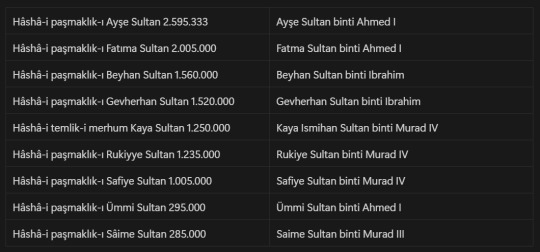
Ayşe and Fatma stand at the top of the hierarchy because a) they’re older and b) they must have amassed a great amount of land during their lives. After them we have the sisters of the reigning sultan (Mehmed IV), so Beyhan and Gevherhan (possibly in order of birth??); then we have Murad IV’s daughters (Kaya is mentioned as deceased because she was at the time), and lastly we have two minor princesses: Saime, a daughter of Murad III and a non-haseki concubine, and Ümmi, either a daughter of Ahmed I or of Murad III as well. I say this because I think their small amount of land means they were not daughters of Haseki Sultans: if Ümmi is Ayşe and Fatma’s sister that’s the only reason she would possess less land than them.
#ask post#ask: ottoman history#kehribar-sultan#ayse sultan daughter of ahmed i#fatma sultan daughter of ahmed i#rukiye sultan daughter of murad iv#safiye sultan daughter of murad iv#kaya ismihan sultan daughter of murad iv#beyhan sultan daughter of ibrahim i#gevherhan sultan daughter of ibrahim i#saime sultan daughter of murad iii#ummi sultan daughter of mehmed iv
12 notes
·
View notes
Note
No problem, it’s actually more comfortable to talk like this :)
What you say seems to make sense because Giustinian talks about Mustafa in past tense:
“Per ultimi sedevan nel Divano doi altri cognati del re, l’uno Chinan, l’altro Mustaffà. […] Mustaffà, fatto in Asia le medesime et peggiori estorsioni, ma convertite per la maggior parte in sé medesimo, provò con la perdita della testa il sdegno di Sua Maestà.”
He says that Mustafa was in the Divan but was sent to Anatolia, where he apparently extorted money from other people, kept it for himself, and “experienced His Majesty’s disdain with the loss of his head”.
This seems to confirm that he was a Damad until he was recently executed. Oztuna says he was executed in December 1628 but if von Hammer says there’s a dispatch dated December 1627, then… Also, Sicill-i Osmani (which is not a contemporary source, we must remember, but still…) says that Fatma married Kara Mustafa Pasha in 1625/26 and he was executed in 1626/27
I think Peirce mistook Kara Mustafa Pasha with Çanbuladzâde Mustafa Pasha, who was Fatma’s husband after Çatalcalı Hasan Pasha. Unfortunately, they were both called Mustafa lol.
About Çatalcalı Hasan Pasha, Sicill-i Osmani confirms the story that he was a servant of Haci Mustafa Ağa and that from 1615 to 1621 was kapıcıbaşı, that is the chief of palace gatekeepers. I guess that in this capacity he was able to find out that Osman II wanted to execute Mehmed.
About Kenan Pasha. Giustinian says he was sent to Greece (recently, I imagine) so maybe only the betrothal was formalised at the time (or some sort of proxy wedding)? I got the inspiration from Uluçay, who says that Ayşe binti Ahmed I was betrothed to Murtaza Pasha a month after Hafiz Ahmed Pasha’s death but he went to Istanbul for the wedding only three years later.
I think you’re right when you said Beyhan and Gevherhan were the only ones alive in 1672 because Fatma was most probably dead by then.
About Babadag, I would like to add (though it’s off-topic lol) that a daughter was born there to Mehmed IV and Gülbeyaz. Querini calls her Hatice and I called her Ayşe because I think he switched the princesses (Kuloğlu Musahip Mustafa Pasha married Hatice Sultan in 1675 and Kara Mustafa Pasha never became a Damad). I said, years ago, that Ayşe was Emetullah Rabia Gülnüş’ daughter but she clearly wasn’t because Querini clearly states that her mother is “Tulbeias” which, I realised only when I wrote my dissertation, was Gülbeyaz. So it’s true that Gülbeyaz was the mother of a princess, like Alderson said.
Unfortunately Turkish/Ottoman sources never mention an Ayşe Sultan binti Mehmed IV but Ragusian diplomats kept calling her “the Musahip’s wife” which is… strange… because (Kuloğlu) Musahip Mustafa Pasha was Hatice’s husband. Moreover, they never mention a Hatice Sultan, not even once. Did she have more names? What do you think? Is it just a simple mistake by foreigners who didn’t quite catch the difference between Ayşe and Hatice (keeping in mind a little Ayşe indeed existed and most probably died in childhood)? I would like to hear your opinion :D
Hi! Previously in Ottomanladies you answered an ask about marriages of Burnaz Atike, Gevherhan and little Atike. So, some historians confused Burnaz Atike with one of Ibrahim's daughters when they claim she married Musahib Cafer Pasha (d.1647) in 1630, as according to Giorgio Giustinian in 1627, Koca Kenan (d. 1652) was already married to Murad IV's sister (Pedani, p.596). And some historians say Gevherhan was the one who married Cafer in November 1646, like Sakaoglu.
And according to Joseph von Hammer, the youngest daughter of Ibrahim betrothed to Cafer was married to the other Kenan, Sari Kenan (d. 1659). But some historians separate the wives of these pashas as Gevherhan marrying Cafer and her sister Atike marrying Sari Kenan, with Atike going on to marry Ismail Pasha.
However, in "Dubrovacka akta i povelje", a report of 1650s refers to "Ghiusciahato sultana moglie di Chieman passa", so it seems to me she married Sari Kenan after Cafer died. And the "Mémoires du Sieur de la Croix" in 1670s, pages 368, 369, 370 and 371 says: "Les soeurs du Grand Seigneur (...) la premiere fut mariée à trois ans, & eftoit à dix avec fon second mary Affaki Mehemet Pasha, Gouverneur dAlep, il fuit étranglé fous pretexte de fauffe monnoye, & elle fe maria pour la troisiéme fois avec Ibrahim Pacha Tefterdar, du depuis Pacha du Kaire, dAlep, & enfin Capitan Pacha, aprés la mort duquel Jemblat Oglou Gouverneur du Kaire la épousée en quatriéme nopces. La seconde mariée auffi jeune que sa soeur, a eu cinq maris, dont le dernier la prit vierge, à cause dun défaut de nature (...) Je ne fcay pas le nom des deux premiers, le troisiéme fut Sinan Pacha, lequel estant Capitan Pacha, perdit la Bataille des Dardanelles (...) Le quetriéme eftoit Ismael Pacha, ce grand Seigneur l ayant choifi pour und es Lieutenans generaux de l armée dHongrie (...) Le cinquiéme sappelle Kassum Pacha, il est Chirurgien de profession"
The quote says Mehmed IV had 2 sisters in 1670s. The 1st married Haseki Cavuszade Mehmed Pasha, then Defterdar Ibrahim Pasha and then a Canpulatoglu (son of Kosems Fatma?). The other, younger than the first, was married to "Sinan" who was Kaptaniderya, so it should be Sari Kenan. After him she married Ismail Pasha and then Cerrah Kasim Pasha, and also had 2 husbands before the first.
(All in all, I believe the first sister who married Haseki Cavuszade could be Beyhan instead, as in 1653, according to "Dubrovacka akta i povelje" she is called "Behar sultana, moglie di passa di Cairo", and in 1563 this was Haseki Cavuszade Mehmed; but interestingly historians believe he was Gevherhans second husband instead...)
In "Per favore della Soltana", several lists give us marriages of Gevherhan. In 1648, she is called widow of Cafer, in 1662 she is wife of Ismail Pasha, and in 1670 she is called wife of Casciu Pascia who is probably Cerrah Kasim Pasha. And in 1676 and 1680, she is called wife of a Canpolatoglu and not another Sultana as Croix claimed.
Paul Rycaut in "The Present State of the Ottoman Empire" also says Gevherhan married Ismail Pasha (and then remarried to Gurcu Mehmed Pasha): "At this tenderness of age, Sultan Ibrahim, father of the present Grand Signior, married three of his daughters, one of which was called Gheaher Han Sultan, hath had already five husbands, and yet as is reported by the world, remains a virgin; the last husband deceased was Ishmael Pasha, who was slain in the passage of the River Raab; and is now again married to Guirgi Mehemet Pasha of Buda".
So it seems to me that Gevherhan married the following: Musahib Cafer in 1646, Sari Kenan in 1647, Ismail Pasha after him, then Gurcu Mehmed, then Cerrah Kasim Pasha, and then maybe a Canpulatoglu (unless that was the other sister like Croix claimed, maybe Beyhan?), before finally marrying Palabiyik Yusuf later in life.
But after all this, I want to ask whether its possible that this sister of Mehmed IV called Atike existed at all? Because it seems quite certain that Gevherhan married Kenan Pasha and Ismail Pasha, not one named Atike, and historians did make a confusion with Burnaz Atikes marriages. And if little Atike didnt exist, was Gevherhan the full-sister of Mehmed IV instead? I know Gevherhan is believed to be born in 1642, and with Mehmed and Fatma it gets too much for Turhan, but Hammer describes her as the youngest daughter in 1647, and if the sister who married Haseki Mehmed was Beyhan, and she was reportedly married for the first time to another at the age of 3 as Croix claims, and the sister who married Sari Kenan and the others was younger than her, then Beyhan could still be born in 1645 as she married Hezarpare in 1648, and Gevherhan was born after her...
Hi! Please be patient with me because these asks take time to unwrap and I’m only doing this in my free time.
I think you’re talking about this ask. About the confusion, it’s something that Uluçay too believes:
Alderson confused the daughters of Ahmed I, Murad IV and Sultan Ibrahim, so he made mistakes.
Alderson confused the daughters of Ibrahim with the daughters of Ahmed I and Mehmed IV, and therefore made some mistakes.
and he’s right because the rapid successions plus the practice of marrying princesses as children created so much confusion.
(it’s so funny that he says that twice lmao)
Okay, so your theory is that Atike Sultan binti Ibrahim doesn’t exist and that some historians seem to have mistaken Burnaz Atike with a daughter of Ibrahim? I hope I understood well.
Everything under the read more (it's very... heavy, sorry lol)
I read Giustiniani’s relazione and the math is not really mathing because he says Murad IV put his four brothers-in-law at the highest posts of government but then mentions five brothers-in-law:
Çatalcalı Haşan Pasha: he’s Fatma’s husband
Hafiz Ahmed Pasha: he’s Ayşe’s husband
Bayram Pasha: he’s Hanzade’s husband
(Recep Pasha: he’s Gevherhan’s husband) > Giustiniani only mentions her as Osman II's elder sister
“Chinan” who, you believe, was Koca Sofu Kenan Pasha
“Mustaffà” ?? who is he??
Sicill-i Osmani says that Kenan Pasha married Burnaz Atike in 1633-34, but Giustinian’s last dispatch from Istanbul was dated 4 July 1627 so… did he foresee the future? Were there more Kenan Pashas?
(Also, who is that Mustafa??)
Now, onto Ibrahim's daughters.

So, I made this table to semplify things because I was going insane with all the information.
I think there is some confusion between Haseki Mehmed Pasha, who was strangled in Aleppo in June 1661 (like de la Croix says), and Çavuşzade/Çavuşoğlu Mehmed Paşa, who lived until 1681. Sicill-i Osmani doesn’t call the latter “Haseki” but he’s identified as Gevherhan Sultan’s husband. Now, the princess who married Haseki Mehmed Pasha could have remarried after 1661, but the one who married Çavuşzade/Çavuşoğlu Mehmed had to wait until 1681.
Beyhan is admittedly a mistery because she was married for less then a year to Hezâr-pâre Ahmed Pasha when she was little but afterwards didn’t have a husband for 11 years? It seems strange. If the Ragusian diplomats called her “wife of the pasha of Cairo” and if Haseki Mehmed Pasha was beylerbey of Egypt in 1653 (as Oztuna confirms in Devletler ve Hanedanlar), then Haseki Mehmed Pasha was married to Beyhan binti Ibrahim. Unfortunately my only Ragusian sources come from the essay Per Favore Della Soltana, and in it there’s a gap between a letter dated 1648 and one dated 1662.
About the Canpulatoğlu Pasha, I would like to add that Canbulad-zâde Mustafa Paşa had two sons with Fatma: Sultânzâde Hüseyn Paşa, who was governor of Budin and of Egypt, and Sultânzâde Süleymân Bey. Both lived to adulthood. Moreover, he had a daughter from his previous marriage: Ayşe Hâtûn. Maybe he had other sons too. It is interesting, though, that de la Croix says Canpulatoğlu is Governor of Egypt, because Sultânzâde Hüseyn Paşa was indeed governor of Egypt at some point.
About Atike binti Ibrahim:
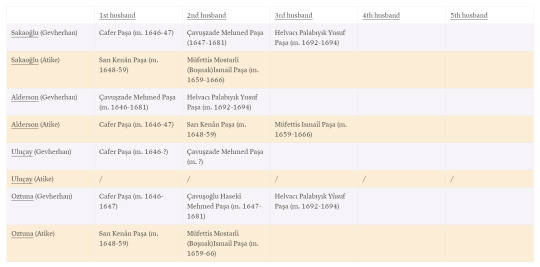
(Uluçay doesn't believe she existed)
As we can see, Oztuna and Sakaoğlu use the same source. Oztuna, though, says that Atike binti Ibrahim was buried in Ibrahim’s mausoleum, while Sakaoğlu says that her burial place is unknown. Curiously, Atike binti Ahmed I is buried in Ibrahim’s mausoleum too.
Since Alderson gave his sources, I went to check. This is a passage from Histoire de l’Empire Ottoman, volume 12, pp. 49-50:
L'ainée, Aïsché, fiancée dès l'age de trois ans à Ipschir-Pascha, épousa à dix Mohammed-Pascha, gouverneur de Haleb; ce dernier ayant été décapité comme faux monnoyeur, elle devint la femme du defterdar Ibrahim, gouverneur du Kaire, puis de Haleb, et alors kapitan-pascha; à sa mort, elle fut mariée à Djanbouladzadé, ancien gouverneur d’Ofen, qui depuis remplit les mêmes fonctions au Kaire. La seconde, nommée Aatika, épousa d'abord le vizir Kenaan-Pascha, puis le vizir Yousouf-Pascha, et en troisième lieu le kapitan Sinan-Pascha, qui avait perdu la bataille des Dardanelles contre les Vénitiens; elle eut pour quatrième époux Ismail-Pascha, grand-inquisiteur en Asie, qui fut tué à la bataille de Saint-Gotthardt; enfin elle contracta une cinquième union avec KasimPascha, l'un des pages de la chambre intérieure, et chirurgien de profession, qui, lors de la circoncision du sultan Mohammed , sut arrêter, au moyen d'une poudre astringente, une hémorrhagie qui avait fait tomber le prince-en défaillance, service que ce dernier récompensa plus tard en donnant à Kasim le gouvernement de Temeswar. […] le Sultan, en reconnaissance du sang qu'il lui avait conservé, refusa de répandre le sien, et, pour le sauver, lui donna la main de sa sœur, qu’un vice de conformation avait empêchée d'appartenir à ses premiers maris, et qui, après dix-neuf ans de mariage, entra vierge dans le harem de Kasim. Celui-ci la délivra de son infirmité au moyen d'ine opération qu’il pratiqua pendant le sommeil d'Aatika, assoupie par un narcotique. Ce fut ainsi qu'il acquit des titres puissans aux bonnes grâces de la princesse, comme précédemment il avait mérité la faveur particulière de Mohammed IV.
Doesn’t it kind of sound like de la Croix (below)? I think Hammer’s source is him.
"La premiere fut mariée à trois ans, & estoit à dix avec son second mary Assaki Mehemet Pasha, Gouverneur d’Alep, il fut étranglé sous pretexte de fausse monnoye, & elle se maria pour la troisiéme fois avec Ibrahim Pacha Tefterdar, du depuis Pacha du Kaire, d’Alep, & enfin Capitan Pacha, aprés la mort duquel Jemblat Oglou Gouverneur du Kaire l’a épousée en quatriéme nopces. La seconde mariée aussi jeune que sa soeur, a eu cinq maris, dont le dernier la prit vierge, à cause d’un défaut de nature (...) Je ne sçay pas le nom des deux premiers, le troisiéme fut Sinan Pacha, lequel estant Capitan Pacha, perdit la Bataille des Dardanelles (...) Le quetriéme estoit Ismael Pacha, ce grand Seigneur l’ayant choisi pour un des Lieutenans generaux de l’armée d’Hongrie (...) Le cinquiéme s’appelle Kassum Pacha, il est Chirurgien de profession”
Now, I think Hammer starts with a mistake because Ibsir Mustafa Pasha was one of Ayşe binti Ahmed I’s husbands. Also, it’s impossible to say where he found that Mehmed IV’s eldest sister was named Ayşe. After these mistakes, though, he repeats what de la Croix said: Haseki Mehmed Pasha, Defterdar Ibrahim Pasha, Canbuladzâde Pasha. The second sister is named Atike (so he says) and stayed a virgin until her last husband, Cerrah Kasim Pasha, operated on her to solve some kind of physical problem she had. This story is similar to the one reported by Rycaut, but he named her Gevherhan instead:
At this tenderness of Age, Sultan Ibrahim, Father of the present Grand Signior, married three of his Daughters; one of which called Gheaher Han Sultan, hath had already five Husbands, and yet, as is reported by the World, remains a Virgin; the last Husband deceased was Ishmael Pasha, who was slain in the passage of the River Raab; and is now again married to Gurgi Mahomet Pasha of Buda, a Man of 90 Years of Age, but rich and able to maintain the greatness of her Court, though not to comply with the youthfulness of her Bed, to which he is a stranger like the rest of her preceding Husbands. — p. 40.
It’s possible that Rycaut had already left the Ottoman Empire when this princess married Cerrah Kasim Pasha. He’s the only one talking about Gurci Mehmed Pasha, though… Interestingly, Sakaoğlu corrects Rycaut’s Gürcü into “(Çavuşzade, Haseki)” but, admittedly, his quote is quite different from Rycaut’s original. In Sakaoğlu’s it is said that the pasha is 30, while Rycaut says he’s 90. Moreover, as far as I know, Çavuşzade Mehmed Pasha was never governor of Buda.
In conclusion, I’m more confused than before lol
As for Mehmed IV’s full sister, I really have no opinion on this. Usually, it’s Beyhan who is given as Turhan Hatice’s daughter but with no hard evidence.
You (and other people) can send me asks on ottomanladies now, I have re-opened my ask box. As I have already said, please be patient with me because I don't have much free time and these things need to be analyzed properly :D
#ask: ottoman history#gevherhan sultan daughter of ibrahim i#fatma sultan daughter of ahmed i#atike sultan daughter of ahmed i#ayse sultan daughter of mehmed iv#hatice sultan daughter of mehmed iv
24 notes
·
View notes
Text
Lets talk about Ümmügülsüm Sultan
There is a chance, that Kösem and Ahmed had another daughter together: Ümmügülsüm.
I am so glad, that with Anonymous sender and Ottomanladies, the truth came to light. Ottomanladies answered very long and very detailed about Ümmügülsüm, she shared her thoughts about the topic, now, here, you can find a conclusion from me:
What we know:
A privy purse register from 1622 gives the names of five unmarried princesses, who may be daughters of Ahmed, Osman II, and even Mehmed III: Umm-i Külsum(=Ümmügülsüm), Hanzade, Halime, Fatma, and Akile. Hanzade and Fatma were Kösem's daughters; Akile is possibly mistaken for Atike or Abide; Halime might be Mehmed III's daughter, named after her mother, Halime. But Ümmügülsüm was less clear.
The relazione of Angelo Alessandri from 1637 says that Murad IV had four FULL-sisters. We know three of them: Ayse, Fatma, and Hanzade. But who could be the fourth? Gevherhan was already dead, Atike was well-knownly not a full-sister and also not Abide. Maybe Ümmügülsüm?
There are some decisions and letters of Murad IV, where he mentions Ümmügülsüm as a sister of his. He uses the same wording that he used for Ayse, who undoubtedly was his full-sister, suggesting Ümmügülsüm was also a full-sister of his.
The 1638/39 harem registers mention one Ümmügülsüm Sultan who received the highest payments besides the three already known daughters of Kösem (Ayse, Fatma, Hanzade) and two daughters of Murad III. This means she could be either the daughter of Murad III or Ahmed I. But since Ahmed I's other daughter, Atike - who was not Kösem's - got a lesser stipend, if Ümmügülsüm is Ahmed I's daughter, she had to be Kösem's daughter too and so she is the fourth full-sister of Sultan Murad IV.
In 1648 the Raguzan envoy also mentions her (possibly her as they use the name Iumi), as the wife of Ahmed Pasha, governor of Herzegovina. They probably married ~1642 until the pasha's death in 1648. This was her second marriage, her first husband was one Halil Pasha, with whom she married before 1638.
In book ''Whisper of the cities'' one Ümmühan Sultan is mentioned as she met with the English ambassador's wife. Based on her, Ümmühan was said to be the aunt of deposed Mehmed IV and sister of Ibrahim I. This happened in 1690, so she still was alive then.
There are still questions:
Why no historian ever discovered this information as none of the evidence is new?
Why Ümmi is not mentioned among Ahmed I's children?
Where is she buried? *
When was she born? *
Why Ibrahim did not force her to serve Telli Hümasah (his wife) when he did it to all of the other daughters of Kösem?
To be honest the burial place of Ahmed I is quite a mess. For example there are two sarcofagies for 'Zeynep' daughters of Ahmed I. One of the sarcofagies stands for an adult woman. There was no daughter of Ahmed, called Zeynep who reached adulthood. So maybe the name is mistaken and that Ümmügülsüm. Maybe she was buried somewhere else as she lived a quite long life, survivin everyone around her and her grave is not idetified yet.
Considering the known children of Kösem and their birth date, the most possible for Ümmügülsüm is that she was born during the late reign of Ahmed I. In 1605 Kösem gave birth to Mehmed; in 1606 or 1607 to Ayse; then in 1607 or 1608 to Fatma; in 1609 to Hanzade. While I see that there is a gap here for one more child (if Kösem got pregnant extremely rapidly), she cannot be older than Fatma, as she was also not married off in 1622 yet, and also since we know quite precisely the sequence of these daughters, I do not think another one was born here but no one knows about her. It would be strange. Then in 1612, she gave birth to Murad, but between him and Hanzade there was time for another child - let it be Selim who was born in 1611 or Ümmügülsüm. Then Kasim followed Murad quite quickly, he was born in 1614, and then Ibrahim came in 1615, so there was no time for anyone else between Murad and Ibrahim. After 1615 there is another chance for the birth of Ümmügülsüm. So she either was born after Hanzade (~1611), or after Ibrahim (~1616). Either way - considering she was not just still alive in 1690, but was surely not suffering, dying since she was involved in the diplomacy meeting - she possibly died in the 1690s, she very probably reached 80 maybe even more in the end.

#ottoman history#ottoman empire#valide kösem sultan#mahpeyker kösem sultan#kösem#ahmed i#ümmügülsüm#ümmügülsüm sultan#ümmi#ummuhan#ummugulsum#ümmihan#ummukulsum#ümmükülsüm
32 notes
·
View notes
Photo
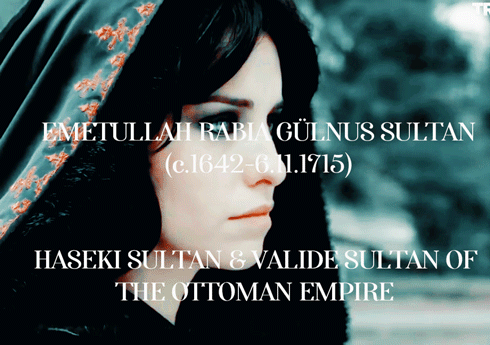

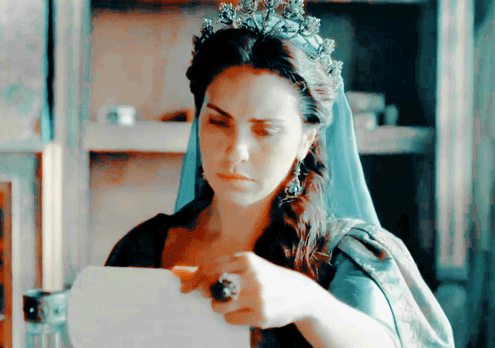



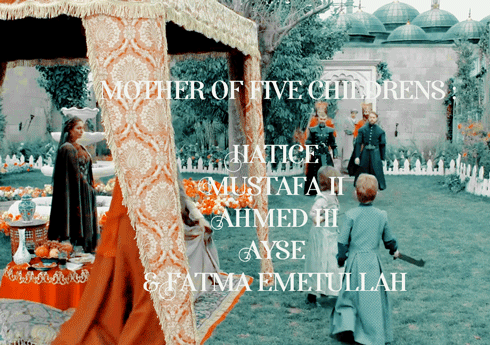

woman that i love: [2/5]
↠ emetullah rabia gulnus sultan
↠ haseki & valide sultan of the ottoman empire
Born around 1642 under the name Evmania Vorya, popular folklore says that she was the daughter of an Orthodox bishop, descendant of the Verzzini family who founded the town of Rethmyno in Crete.
According to tradition, she and her two sisters were captured at the start of the Cretan War, around 1646. Her two sisters were bought by Pasha at the Istanbul market, while Gulnus was sold for the imperial harem
Educated in the harem, which renamed her (perhaps) Emetullah Rabia Gülnus, she became, at an unknown date, Mehmed's concubine. The Venetian ambassador described her as a tall, slender woman with black curly hair and blue eyes.
She gave him her first child: a daughter, Hatice, around 1660, then her first son, Mustafa, in 1664. Of a total of five children, four will reach adulthood (only Ayse died in childhood)
After Mustafa’s birth, Gülnus was named Haseki Sultan. She was the only (or one of the very few) haseki to accompany her husband on military campaigns, and far from the battlefields, she was known to join him on his hunting parties. Mehmed insisted each time, to take her with him. Subject of contemporary European engravings, she was drawing riding a horse. His son, Ahmed, was the first sultan born outside of Turkey, in the present-day Bulgaria, in December 1673.
A myth on Ottoman empire was the possibly rivalry between Gülnus and the concubine Gülbeyaz and possibly lead the murder of that concubine. If rivalry was largely possible, murder seem exagerate or invented.
Following the deposition of Mehmed IV, Gülnus was exiled in the old palace and separated from his sons. Afife Kadin wrote in her poems that she regularly heard Gülnus screaming and crying between the walls of her room.
After the reigns of Ahmed II and Süleyman II, in 1695, Gülnus became Valide Sultan for his eldest son. Unfortunately, it is deposed in 1703 and Gülnus confirms the deposition. Ahmed succeeds his brother. To calm the people angry with the Valide Sultan, he exiles him briefly to the Old Palace.
In 1711, it was she who persuaded Ahmed to declare war on Russia after two years of propaganda in favor of an alliance with the Swedish king Charles XII. Gülnus persuaded his son that the king was a man worth taking a risk.
Emetullah Rabia Gülnus died of illness in 1715, possibly at the age of seventeen.
#get to know me#emetullah rabia gulnus sultan#ottoman empire#sultanate of women#*mine#*women that i love#history#ottoman history
88 notes
·
View notes
Text
Seniha Sultan (5 December 1851- 15 September 1931)

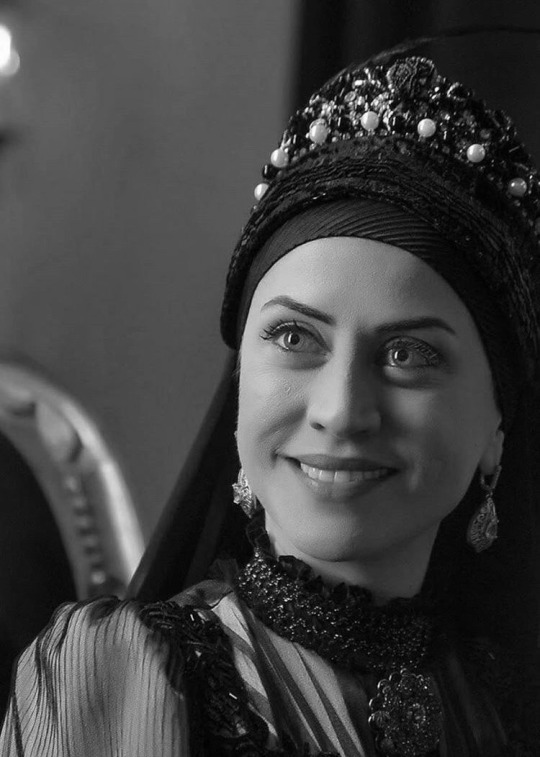

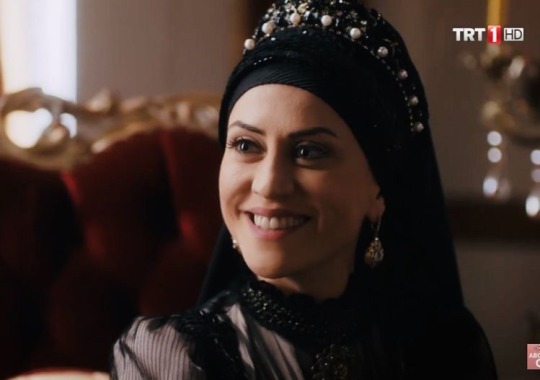


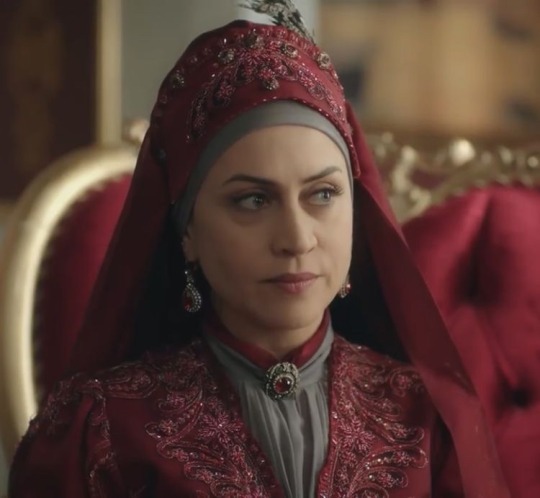


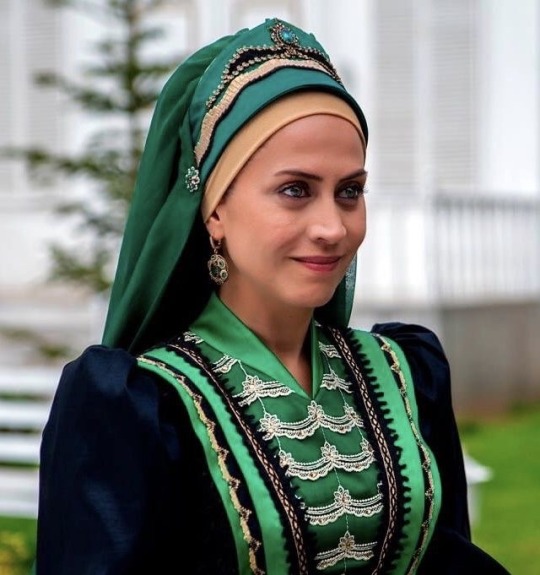
Daughter of Abdulmejid I and Nalandil Hanim
Wife of Mahmud Celaeddin Pasha
Mother of Sultanzade Sabahddin Bey and Sultanzade Ahmed Lutfullah Bey.
Sister of Sultans Murad (half), Abdul Hamid II (half), Mehmed V (half), and Mehmed VI.
Aunt of Sehzade Mehmed Selaheddin, Hatice Sultan (Murad), Fehime Sultan, Fatma Sultan (Murad), Aliye Sultan, Sehzade Mehmed Selim, Ulviye Sultan, Zekiye Sultan,Sehzade Ahmed Nuri, Naime Sultan, Sehzade Mehmed Abdulkadir, Naile Sultan, Sehzade Mehmed Burhaneddin, Sadiye Sultan, Ayse Sultan, Refia Sultan, Sehzade Abdurrahim Hayri, Hatice Sultan (Abdul Hamid II), Sehzade Ahmed Nureddin, Sehzade Mehmed Abid, Samiye Sultan, Sehzade Mehem Ziyaeddin, Sehzade Mahmid Necmeddi, Sehzade Omer Hilmi, Fenire Sultan, Ulviye Sultan (Mehmed VI), Sabiha Sultan, and Sehzade Mehmed Ertugrul.
Mother-in-law of Tabinak Hanım
7 notes
·
View notes
Note
Hi 🌸 I wanna know more about Beyazid II like his life as a prince and as a sultan, his wives and children (besides Selim I of course)
Thank you for your question. We want to give you an answer that is as accurate as possible, so we double-check all our sources, and due to how comprehensive this answer is going to be, we decided to split it up. I will start with his wives and Joanna, Lina and Veronica will work on the rest, so we kindly ask you to come back in a couple of days for that.
Gülbahar Hatun
Her name and her identity as a whole is disputed—it’s difficult to determine whether Gülbahar and Ayşe were two different wives or not. The oldest source on this, as well as Babinger and Alderson, identify Ayşe as Selim I’s mother, however, according to Sicill-i Osmanî, her name is Gülbahar.
Gökbilgin and Danişmend support the theory that Ayse, daughter of the Bey of Dulkadir, was Bayezid’s lawfully wedded wife and Selim’s mother, and Gökbilgin claims that Ayşe might have been Gülbahar. Sakaoğlu, however, states that there is no further information on Ayşe and proposes that one source of confusion could be that Bayezid’s own mother was also called Gülbahar. He writes that there is no doubt that Ayşe was lawfully wedded to Bayezid, but that there is no indication of her being Selim’s mother, and he notes that it is curious that, when Selim had Ayşe’s father—and therefor, if she was indeed his mother, his grandfather—executed, chroniclers did not mention this fact.
Therefor she might have been Maria, the daughter of a Pontic Greek priest, or Ayşe, the daughter of Alaüddevle Bozkurt Bey
In keeping with the former, she supposedly was captured during the conquest of Trabzon and given to Bayezid
She gave birth to Selim I when Bayezid was still a şehzade and later accompanied Selim to Trabzon and Samandıra
Selim had the Hatuniye Külliyesi built in her name
She died before her son ascended the throne, and is buried in the Gülbahar Hatun Camii in Trabzon that was built in honor of her
According to Halil Edhem Eldem, archaeologist, the inscription of her tomb reads: “May Bânû-yı Rûm, who has turned her face from the world towards eternity, sit on the throne of Heaven and may God bless her”
Nigar Hatun
Her vakfiye reads “daughter of Abdullah”, this indicates that she was a slave concubine who converted to Islam upon entering the harem
She gave birth to Fatma Hatun, Ayse Hatun and Şehzade Korkut when Bayezid himself was still a şehzade
When Mehmed II died and Bayezid ascended the throne, she accompanied him to Constantinople
As expected of her, she went with Korkut when he was sent to Manisa and Antalya to govern
After Selim I had his brother executed, she returned to Antalya
Hüsnüşah Hatun
Some sources identify her as the mother of one Nasuh Bey, however, Sakaoğlu says that this is incorrect since she’s referred to as Hüsnüşah, daughter of Abdullah (see above)
She was the mother of Şehzade Şehinşah and Sultanzade Hatun
She corresponded with Selim I on behalf of Mevlana Pir Ahmed Çelebi, a scholar who had been at her sons court, and who was neglected when the members of the prince’s household were assigned new posts
She had the Hatuniye Mosque Complex built in Manisa, one of the “most beautiful” ones
Şirin Hatun
Her vakifye also describes her as “daughter of Abdullah”, so she too would have been a converted slave concubine
She gave birth to Bayezid’s first son, Şehzade Abdullah, when he was still a şehzade, and was the mother of Aynışah Hatun
Şirin accompanied Abdullah when he was sent to govern Manisa and Karaman
After her son’s death, she went to Bursa and later had a tomb built for him, where she would be buried
Sakaoğlu states she also had a mosque built in Trabzon
Gülruh Hatun
Mother of Şehzade Alemşah and Kamerşah Hatun
Alemşah was sent to govern Manisa, and Gülruh accompanied him
She put much effort into protecting her son, whose conduct Bayezid seems to have found unsatisfactory, as he ordered her to discipline him
In a letter to Bayezid she states “I have done everything I can to preserve order“ and Peirce writes “[she] goes on to present her case against seven members of her son’s suite—including his tutor (lala), his doctor, and his preceptor—to whom she attributes responsibility for the problems“ and expresses concerns about her son’s health
I will include an excerpt of her letter below:
My fortune-favored padishah, heed my cry for help,… rid us of [my son’s] tutor, teacher, and doctor. They are masters of corruption…. Send us good Muslims, because our situation has been pitiful since these persons arrived. They have deprived me of my mother’s rights…. If these seven do not go, they will utterly destroy the household of my son, your servant.
According to Uluçay, she had a mosque and a soup kitchen built in Akhisar, Aydın Güzelhisar and Duraklı
She died in the early days of Süleyman’s reign
Bülbül Hatun
Mother of Şehzade Ahmed and Hundi Hatun
Bayezid favored their son Ahmed as his successor, who was Selim’s principal rival
Sakaoğlu describes her as “benevolent”; she had built and endowed a religious college in Bursa, and a mosque and a soup kitchen in Ladik
In Amasya, she had another mosque, a school and a fountain built
She also had a tomb built for Ahmed, in which she was buried at her death
Ferruhşad/Ferahşad Hatun
Mother of Şehzade Mehmed
According to Sakaoğlu, Bursa’s registry refers to her as Muhterem Hatun; he suggests that she might have carried the double name Muhterem Ferruhşad
After her son’s death, she retired to Bursa
She established a foundation in Silivri in 1521
Mühümaz Hatun
Alderson names her as the mother of Şehzade Korkut and states that Fisher says he was the full-brother of Selim, and therefor son of Ayşe/Gülbahar
However, Uluçay corrected Şehzade Korkut’s mother as Nigar Hatun (see above), likewise Sicill-i Osmanî does not mention a Mühürnaz/Mihrinaz among Bayezid’s wives
Therefor her existence/identity is disputed
Unnamed Hatun
Uluçay does not list her at all; Sakaoğlu refers to H. Hüsameddin, who writes that Bayezid’s first wife was the oldest daughter of Emir Bey
Alderson lists her as the mother of Şehzade Mahmud and Gevheri Muluk

Sources:
Alderson, Anthony Dolphin: The Structure of the Ottoman Dynasty, Greenwood Press, 1982
Binous, Jamila: Early Ottoman Art: The Legacy of the Emirates, Museum With No Frontiers, 2002
Peirce, Leslie: The Imperial Harem. Women and Sovereignty in the Ottoman Empire, Oxford University Press, 2010
Sakaoğlu, Necdet: Famous Ottoman Women, Avea, 2007
Sakaoğlu, Necdet: Bu Mülkün Kadın Sultanları. Valide Sultanlar, Hatunlar, Hasekiler, Kadınefendiler, Sultanefendiler, Basım Yayım Dağıtım San. ve T ic. Ltd. Şti, 2015
Uluçay, Mustafa Çağatay: Padişahların kadınları ve kızları, Ankara, Ötüken. 2011
27 notes
·
View notes
Text
The four Haseki and their relationship with beloved Mothers-in-Law
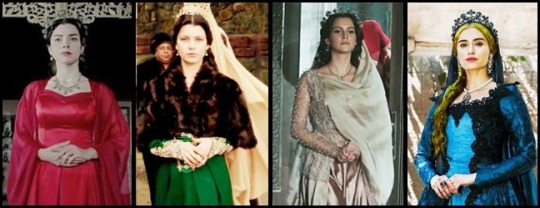
We'll come closer to the end of Kösem sultan and her magnificent story :,(. Now let me present these four ambitious hasekis in different time but lived below the same sky (don’t ask me why I included Ayşe, just keep reading it! ;-) and why I don’t include Hürrem vs Valide Ayşe Hafsa because mainly I forgot their story XP). Hürrem started this "opposing your mother-in-law" continued with Nurbanu to Turhan sultan (only in MY and MYK dear, not historically), but how their stories differ? Let's see...:
Afife Nurbanu Sultan:
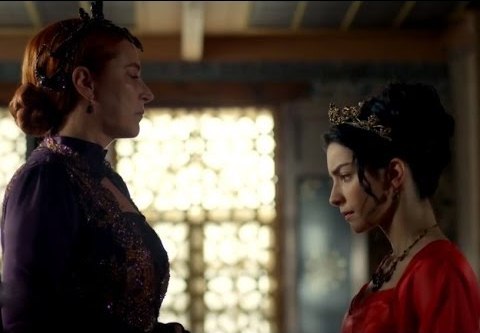
Her mother-in-law was Hürrem sultan, Hürrem wanted her to be a smart but obedient daughter-in-law, she became a gozde (favorite) to sehzade Selim (later Selim II). Iirc, Nurbanu's conflict with Hürrem started when Hürrem refused to protect & defend her after she had fight with Hurichihan (Hatice sultan's daughter) & caused her death. Afraid to the consequence of her deed, she threatened Hürrem to show her letter about ordering Nurbanu to kill Suleyman I's other gozde, Nazenin hatun, from this onwards their conflict began. Other factor that driven Nurbanu is her ambition to support Selim to be the successor, next sultan after Suleyman I, especially after she found that Hürrem was supporting her other son, sehzade Bayezid. Her conflict with Hürrem mainly to prevent and foiled her to support Beyazid. Even after Hurrem's death, Nurbanu was still occupied with Beyazid's remaining supporters (including Mihrimah & Rustem->though Rustem would betray later via Gracia Mendes' seduction (LOL)).
Mahpeyker Kösem Sultan:
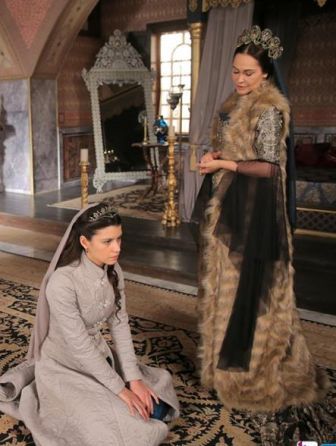
Her actual mother-in-law was Handan sultan, but her nemesis (in the show) was Safiye sultan, Handan's mother-in-law & the grandmother of Kosem's spouse Ahmed I. Similar with Hürrem, Safiye intended to present Kösem to Ahmed and use her to influence & control his power. Their conflict started when Safiye, unable to control Kösem anymore, decided to kill her father. Feeling betrayed, Kösem decided to avenge her father's death (while being a heroine too) by leading Safiye's daughter, Fahriye sultan to her death. Safiye repaid it with Yasemin hatun (Kösem's sister)'s death and Kösem paid it back with Iskender/sehzade Yahya (Safiye's missing son)'s death. Also Kösem being heroine wanted to protect Ahmed and the state from her, especially when Safiye did the coup d'etat, causing chaos in the palace. Not long after, Ahmed died, leaving Kösem with her little children fighting Safiye (and later Halime) alone.
Ayşe Sultan:
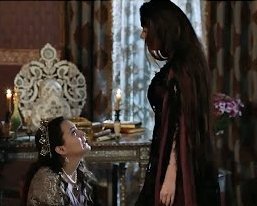
Her mother-in-law was Kösem sultan and her spouse was sultan Murad IV. Like Hürrem and Safiye, Kösem too expected that Ayşe would be an obedient, helpful & easily controlled by her. I think during the very first episode of season 2, there would be a rivalry and conflict between Ayşe and Kösem, how Ayşe said that she wished to support Murad and keep him away from the influence of his mother in ruling the state. Ayşe also said that she refused to follow every Kosem's orders and be obedient to her. Too bad this rivalry concept got thrown out and replaced with her fake rivalry with Farya as Mahidevran 2.0. Ayse's story here would be mainly fanon:
After Kösem's ten years regency, Murad became the sultan officially (I mean, the time when Murad was able to govern the state independently), but with Kösem's influence in the government, viziers & jannisaries, they were already familiar and support her and the people greatly trust her. Murad was struggling to gain the trust and recognition from his people. Everyone (including viziers and jannisaries) still doubted this young sultan's capability to rule, they always compared him to Kösem. Murad wanted to step out from his mother's shadow, he tried to limit Kosem's power and influence, he wanted his mother as valide sultan back to her initial duty, managing the harem. As loyal spouse and his most beloved woman, Ayşe supported Murad and helped him to be able to rule independently by trying to dispel and keep him away from his mother's influence, she also managed to seek the support from the people including some viziers. Ayşe chose to be a good wife and queen/haseki who supported her spouse the sultan in government rather than being used and controlled by his mother. Thus her conflict with Kösem sultan began. Besides her conflict with Kösem, Ayşe also had her own problem, she was struggling to provide Murad a healthy sehzade who would have his chance to survive adulthood and become the heir for Murad's throne. Murad's relationship with his mother was gradually strained. Seeing her son's insubordination to her, Kösem decided to get rid of Ayşe as the mastermind of the destruction of their family relationships. Their rivalry was fierce until Murad's death came. Ayşe who had lost her greatest support (and love) Murad and lost her sehzade who could be made an heir, lost her power, influence and purpose completely. She was immediately removed by Kösem and sent away to live in the Old Palace.
Turhan Hatice Sultan:
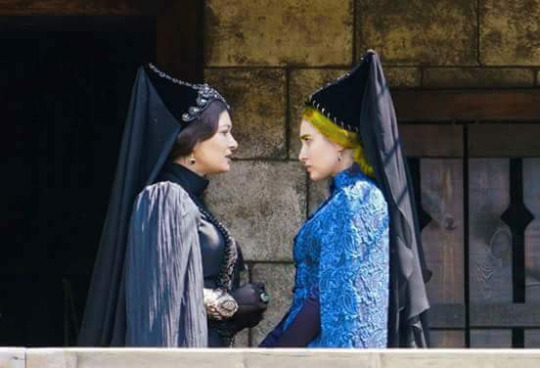
Her mother-in-law was also Kösem sultan and she was the spouse of Ibrahim I. Turhan had learned all the tales of the powerful sultana in Ottoman and had her own ambition. She saw Kösem as her role model and at the same time she wanted to be like her. Kösem still expected her to be easily controlled and obedient to her but Turhan thought that being obedient and passive won't make her a powerful figure. She found that to fight her mother-in-law, she had to get her sultan's support. Observing her situation and circumstance, getting the support from her spouse seemed difficult since Ibrahim had numerous gozde that he loved, he even appointed his eight gozde (including her) as his haseki. Turhan could become the Baş Haseki had been a lucky one for her since she had Ibrahim's oldest sehzade Mehmed. The odds of getting support from her spouse are getting smaller as he brought new gozde again and this gozde became his legal wife (Telli Humaşah). Thus, rather than wage an open war to Kösem, she decided to gain the trust for her. By being the closest person to Kösem, she could observe everything, from how Kösem gains her supports to find a chance to overthrow her. During this time, Turhan managed to gain the trust of viziers, but Kösem still had the most influence in jannisaries. Turhan also tried her best to secure her son and protect him as the next heir after Ibrahim's death. When Ibrahim died, Mehmed the oldest sehzade succeeded him. But as long as Kösem still alive, her struggle was not over yet. Kösem who had many experience as regent thought that inexperienced Turhan wasn't competent enough to rule the state, Kösem was preventing her to be in charge of state affairs. Turhan disagreed since she felt entitled as the mother of Mehmed IV. Kösem later went to far by attempting to remove Mehmed and replaced him with sehzade Suleyman (the son of supposedly more obedient haseki Saliha Dilasub). Driven by her will to protect her son's life, Turhan decided to get rid Kösem completely and her men successfully murdered her. Eventually, Turhan became regent and rule the state together with her son. My fanon is that the previous haseki sultan Ayşe wanted have her revenge with Kösem, so she temporarily helped Turhan behind the scene.
Summary:
Many young sultana during their time as queen consort (haseki) had strained relationship with her mother-in-law, the queen dowager (valide sultan), they had similar ambitions but they had their different motivation and situation.
In Nurbanu's case, she was a favorite of Selim II during his sehzade years. There was sehzade Beyazid as threat who challenged Selim's way to be the heir. Being supportive to her spouse, Nurbanu made sure that Selim will success it. Nurbanu's main focused was how Selim would take the throne.
In Kösem's case, she initially was driven by revenge. But later when she found that Ahmed I her spouse's life was also in danger, she fought to protect him. Safiye's failed attempt to control Ahmed drove her to led a coup d'etat. Ahmed with the help of Kösem successfully weakened Safiye's power and influence. But not long after that, Ahmed died and Kösem lost her greatest support. Kösem became alone surrounded with many dangerous snakes especially Safiye and Halime, though in the end she was able to get rid of them.
In Ayse's case, Murad became a sultan who just been deemed worthy to rule by his own. Ayşe helped Murad to gain the trust and to be recognized by his people, she wanted him to get out from Kösem's shadow. Ayşe also had another burden since Murad didn't have an apparent heir yet. In the end Murad died without heir and his brother Ibrahim was the one who succeeded him. Ayşe lost her position and had to spend her life in the Old Palace according to the custom.
In Turhan's case and during her time, Ibrahim I had his eight harem girls as the haseki. Turhan happened to bore him the oldest sehzade Mehmed thus she became the Baş haseki. Turhan had to face her many harem rivals including the greatest threat who was Telli Humaşah, the girl Ibrahim brought and became his legal wife. Turhan was not really loved by Ibrahim (as she was not his most favorite). After Ibrahim's death, Turhan had her power struggle with Kösem sultan. She wanted to be regent ruling independently but her reign always overshadowed by Kösem. Their conflict became worse when Kösem wanted to get rid of Turhan's son and replaced him with her other grandson, thus leading to Kosem's death by Turhan's men hands.
TL;DR
All had their conflict with their MiLs but Nurbanu was haseki of sehzade whereas Kösem, Ayşe and Turhan were haseki of sultans. All supposedly outlived their MiL but canon MYK!Ayşe died before Kösem. Although Kösem had her conflict with her actual MiL Handan, her main nemesis was Safiye sultan, her MiL's MiL (or should I say grandmother-in-law). Nurbanu's spouse Selim I outlived his mother but Ahmed I (Kosem's spouse), Murad IV (Ayse's spouse) and Ibrahim I (Turhan's spouse) died before their mothers (and grandmother in Ahmed's case). Nurbanu, Kösem and Turhan had their surviving sons took his fathers' throne whereas Ayşe didn't. Nurbanu, Kösem and Ayşe were loved and greatly supported by their spouses whereas Turhan was not really (but canon-MYK!Ayşe instead was greatly abused and hated by him), Ibrahim might loved Turhan but she was not his most beloved one. Nurbanu, Kösem and Turhan succeeded in becoming valide sultan and became the most powerful sultana in their respective era whereas only Ayşe who couldn’t make it since she didn’t have a sehzade (the prince), the most important asset for every women as royals.
Conclusion:
Powerful and ambitious women in MY and MYK always expect their daughters-in-law to be the obedient and easily-controlled. Unbeknownst for them, they became the role models of their younger generations. Thus, instead having the obedient DiL, they got their own reflection: the DiL that exactly the same with their younger selves. These DiL won’t easily submit to them just like themselves in their younger days.
Also I wonder when Turhan’s hair color was mentioned as blonde, There is no popular culture that show Turhan with blonde hair. Mahpeyker: Kösem Sultan’s Turhan was brunette and Muhteşem Yüzyıl: Kösem‘s Turhan is dark haired (likely black). I’m sorry with my shitty bad quality editing but I want my Turhan’s blonde XD, I’m not expert.
#valide sultan#haseki sultan#muhtesem yuzyil#muhtesem yuzyil kosem#my thoughts#mother in law vs daughter in law#ottoman empire#hurrem sultan#nurbanu sultan#safiye sultan#kosem sultan#ayse haseki sultan#turhan hatice sultan#haseki ayse sultan's story is mainly fanon#canon!MYK story gave Ayse's story & character injustice#canon!MYK is not historically canon either#respect haseki ayse post#blonde!Turhan
27 notes
·
View notes
Note
DAUGHTERS OF AHMED I AND MURAD IV
Ahmed I had six daughters who reached adulthood: Gevherhan, Ayşe, Fatma, Hanzade, Atike and Ümmügülsüm.
Gevherhan Sultan was Ahmed I’s eldest daughter; married twice to Ökuz Mehmed Pasha and Topal Recep Pasha. She died before 1631. I believe that Ragusian report of 1642 mentioning Ibrahim’s sister as sultana moglie di Mustafa Pascia detta Guiheri was mistaken for Hanzade(?). Again, in Osmanli devltinde kim kimdi it is clearly stated that Hanzade married Mustafa Pasha in 1643. So, it stays as a questionmark...
Atike Sultan was Ahmed I’s daughter born in late 1600s. She was married at the beginning of the reign of Murad IV to Koca Kenan Pasha, and eventually in 1652 to Doğancı Yusuf Pasha (Turhan personaly take care of chosing husband for her). I have just problem detecting year of her death; source claim 1672/74 (but I would say it was when Turhan’s daughter Atike died). One source Atatürk konferansları suggest her death date as 1660. Anyway, it seems that historians were unable to bifurcate daughter of Ahmed I and Ibrahim I, and they mixed them with each other at times…
Ayşe Sultan’s marriages are well dated and known. Exept two things: she married Hafiz Ahmed Pasha in 1622 (which I will prove in discussion below) and we don’t know who was her husband in early 1650s. Her last husband was Mustafa Pasha. She died in 1656.
Ümmügülsüm Sultan was born either in 1610 or 1617. Her only known husband during reign of Murad IV was some Halil Pasha. I maybe have found something about him by Süreyya Mehmed Bey:
Halil Paşa - Enderun'dan yetişip mîrahûr-ı evvel olmuştu. 1048 'de (1638/ 39) veziriik verilerek Bağdadim fetih müjdesini İstanbura getirmiştir. Ardından saltanat değişikliği dolayısıyla gözden düşmüş olarak veffat etmiştir.
She was remarried in 1641 to governor of Herzegovina Ahmed Pasha. This marriage was also recognised by Kamil von Behr, and he referred to her as Patti Sultana. She was presented gifts as his wife in 1642, 1648 and 1655. Even she didn’t continue to receive Ragusian gifts, she was still alive during reign of Süleyman II, being alive in 1688, when she started to receive visits of Katherine Trumbull, wife of an English ambassador. On such visits, Katherine was able to collect news from the Ottoman court, such as the rumour in July 1690, later disproved, that Sultan Mehmed had died.
FATMA SULTAN
I would strongly suggest that not all marriages of Ahmed I’s daughter Fatma Sultan are oficially known. Evliya Çelebi mentioned that Fatma had twelve husbands before Melek Ahmed Pasha. I think that I am only person in this world that would claim now that his claims wasn’t sarcastic and that he was telling truth. Now, ambassador’s report from 1st April of 1622 claimed that Sultan Osman succeeded to marry his half-sisters Ayşe Sultan and her younger sister, and that he plans to marry third sister soon (Gevherhan was already married to Recep Pasha):
Continua tuttavia la Maestà sua gia molti giorni nel detto serraglio, dove ha dissegnato maritar in diversi, soggetti 200 di quelle donne che vi habitano, havendo anche concluso matrimonio di due sue sorelle; una fu moglie di Nasuf, in Cafis Bassa di Van, che hora si trova in viaggio di ritorno, et fu gia capitan del Mare, et l’altra minor nel suo Tornacchi, che è un capo de Giannizzeri, di quelle, che hano cura delle Grue di sua maesta, et di quella caccia un'altra ne voleva dar al figliolo, che fu Cemecogli, ma egli sin hora si scusa con la povertà, riuscendo il matrimonio con le Sultane ne per la molto spesa, et per il loco predominio sopra i mariti, peso granissimo, et intollerabile dai Bassa di conto mai procurato. é stata la maestà sua questa settimana piu d’una volta incognita nell’Arsanele, per veder se si sollecita il lavoro, et ha donato al Capitan Bassa doi Veste a tal effetto, il quale affretta hora grandemente quello delle galee per mar negro, che saranno venti fra pochi giorni all’ordine per partir.
In work An Examination of Daily Politics and Factionalism at the Ottoman Imperial Court in Relation to the Regicide of Osman II (r.1618-22) (p. 66) author, using the same report, succeed to identify husbands of these Sultanas:
In late March 1622, the sultan married Ayşe Sultan, the ex-wife of former Grand Vizier Nasuh Pasha, to the Governor of Van, Hafız Ahmed Pasha, and his other sister, to the Governor of Damascus, Murtaza Pasha.
This is great, because the Sultana who was married to this Murtaza Pasha was (as Venetian report says) younger than Ayşe, and I would certainly say that this was Fatma’s first husband. The third one who was planned to be given in marriage to Murtaza Pasha’s son was most probably Hanzade. To remind you, Gevherhan was married for Recep Pasha at the time.
P.S. Who was daughter of Kosem Sultan refferend in letter she prepared for pasha in 1626 after she sent her daughter Fatma? She was never named. Historians made wrong assumption that it was Ayşe Sultan, because Hafiz Ahmed Pasha was Grand Vizier at the time, and they lacked information when did she married him, and with their free will chose is was Ayşe. I would made an assumption that she was most probably Ümmügülsüm. But still, we don’t know who this Pasha was…
At the beginning of reign of Murad IV, one of his sisters married Şehid Ali Pasha (d. 1624) (see Sakaoglu). This also was most probably Fatma, as her sisters Ayşe, Hanzade and Gevherhan had established husbands (Hafiz Ahmed Pasha, Bayram Agha and Topal Recep Pasha). According to Hammer, Atike was married before 1627 to Kenan Pasha who was seventh vizier in Divan. And please don’t ask me in which work, but I also found that Evliya stated that Grand Vizier Kemankeş Kara Ali Pasha married sister of Murad IV. I remember I was shocked, but I hope I will find again that same statement. Anyway, there is one more thing said in Demetrius Cantemir’s book The History of the Growth and Decay of the Ottoman Empire about one of Murad IV’s sister which occupied my mind, and made me think that it was about Fatma, because of her well-known greedy character:
Murad IV’s sister had four husbands in one year, and not the one of the marriages was celebrated according to the custom. They were accused of some crime, and put to death by the emperor, and their riches with all their effects assigned indeed to the Sultana as their law-wife…
Her (first officialy known) new husband was Çatalcalı Hasan Pasha, whom she married in 1624. She forcefully divorced him, as Murad IV’s was disturbed by Kösem’s extensive support for Hasan Pasha. Anyway, he continued his duties and even became Kapudan Pasha until he was poisoned by Recep Pasha in 1631, or rumour does say so (source: İstanbul armağanı, p. 117). After divorce, she was married in the same year to governor of Egypt Kara Mustafa Pasha, who was executed by Murad IV because of some action contrary to the law of God.
In work Fatma Sultan: A Sultana in the Shadow of Passion and Wealth on page 255, author cites source which claims she was married in 1629 to Sarraç Mustafa Pasha. Possibly.
I would now stress out that Fatma married Canpoladzade Mustafa Pasha in 1632. But between him and Sarraç Mustafa Pasha, she definitely had one more marriage. I will give you Venetian source I found in Vesna Miović’s work (p. 188, n. 258):
26.10.1631. Il Capitan del Mare si speta qua col primo bon tempo…al quale si tiene per certo che e stata promessa la sultana vedova del Pascia morto a Scopie questa estate…
As you see, Fatma was promissed to Kapudan Pasha (you fill find out Canpoladzade Mustafa Pasha was Kapudan Pasha from October 1630 until July 1632 if you check the right sources) in October of 1631, before she married him in 1632. But the most interesting thing is that, when she was promised to him, she was widow of governor of Skopje who died at summer of 1631. This guy’s identity was Kaçanikli Mehmed Pasha, who was really governor of Skopje and died in 1631.
As you all know, Canpoladzade Mustafa Pasha was executed in 1636. With him, she had sons Hüseyin and Süleyman. After his death, in 1637, she remarried Koça Yusuf Pasha (in 1638 records mentioned as his wife) and stayed with him in marriage until his death in 1658. They even had son, Ömer.
Her last three marriages were with Melek Ahmed Pasha, Kanbur Mustafa Pasha and Közbekçi Yusuf Pasha. But I would suggest she had at least a marriage between Yusuf Pasha’s death in 1658 and marriage with Ahmed Pasha in 1662.
According to work Fatma Sultan: A Sultana in the Shadow of Passion and Wealth, on page 256, we find out that Fatma Sultan died in 1671, most possibly during March:
Fatma Sultan 1671 yılında yaklaşık 66 yaşında vefat etti. Kaynaklarda Fatma Sultan’ın ölüm tarihiyle ilgili net bir bilgiye yer verilmemiş, genellikle Kozbekçi Yusuf Paşa ile evliliğinden sonra öldüğü ifade edilmiştir. Ölüm sebebi belli değildir. Terekesinde satılacak mücevherlerin kaydedildiği tarih 14 Zilkade 1081/25 Mart 1671 olarak gösterilmiştir (TSMA.d. 10457/124). Fatma Sultan’ın tasarrufunda bulunan Manastır kazası paşmaklık hassı 1671 yılının Mart ayından itibaren Haseki Sultan’a verilmiştir (MŞS. 21: 72, 75). Bu bilgilere göre Fatma Sultan’ın 1671 yılı başlarında vefat ettiği anlaşılmaktadır. Cenaze ve defin işlemlerinden sonra mirasın kayda geçirildiği düşünüldüğünde, terekenin toplanmasının zaman aldığı görülmektedir. Kabri, babası Sultan I. Ahmed’in türbesindedir (Mehmed Süreyya, 1996, s. 14)
Beside Ahmed I’s daughters, there were several unknown marriages of daughters of Murad IV. In Angelo Alessandri’s report from 1637, he says Murad IV had eleven-year-old daughter he intends to marry to Silahdar Mustafa Pasha. Additionally, it is known that thirteen-year-old daughter of Murad IV was married to Tüccarzade Mustafa Pasha in 1640 (Sakaoglu, Alderson). Now, what if I tell you that Silahdar Mustafa Pasha and Tüccarzade Mustafa Pasha were the same person? See this: https://www.suvakfi.org.tr/cesme/adalar/kaptan-i-derya-tuccarzade-silahdar-musahip-mustafa-pasa-cesmesi-h-1048-m-1638
Tüccarzade Silahdar Mustafa Pasha was executed in 1642 (not 1641 as Sakaoglu claims) as governor of Timisoara. Also, work Life After the Harem: Female Palace Slaves, Patronage and the Imperial Ottoman Court , p. 83, says:
According to Naima, in 1642, the sword bearer, husband of Kaya Sultan (daughter of Murad IV) was murdered.
All in all, I want to point to fact that Kaya Sultan was the eldest daughter of Murad IV, born in 1627, who married Mustafa Pasha in 1640 until his execution. She remarried in 1644 to Melek Ahmed Pasha. I am conversant with statements of her being born in 1633, which I strongly evaluate as UNRELIABLE.
Only Öztuna claimed of Murad IV’s daughters, Hanzade Sultan and Gevherhan Sultan, married in August 1645. Hanzade married Nakkaş Mustafa Pasha (d. 1657; different from same-named husband of Hanzade’s same-named aunt, but this Nakkaş Mustafa Pasha died in 1653 – again, I am SUSPICIOUS about this), and Gevherhan Sultan, who married Haseki Mehmed Pasha (who actually married to Turhan’s daughter Ayşe Sultan in 1653). As Haseki Mehmed Pasha remarried in 1553 to daughter of Ibrahim, Gevherhan died before (even before 1648, as she didn’t receive gifts from Ragusians). Hanzade existed, she was still alive in 1662, and was at the time married to some vizier Musa Pasha.
Mahmiye-i İstanbul’da Ali Paşa-yı Atîk mahallesinde sâkin Dergâh-ı âlî dâme mahfûfen bi’l-meâli kapıcıbaşılarından iftihârü’l-emâcid ve’l-ekârim câmi‘ü’l-mehâmid ve’l-mekârim Mîr Mehmed Ağa b. Melek Mehmed meclis-i şer‘-i hatîrde işbu bâ‘isetü’l-kitâb zevcesi Bedirhan bt. Nimetullah tarafından ikrâr-ı âti’l-beyânı tasdîka vekîl olup nehc-i şer‘î üzere vekâleti sâbite olan fahrü’l-akrân dayısı oğlu Ebulkâzım Bey b. Yusuf mahzarında ikrâr ve takrîr-i kelâm edip mahmiye-i mezbûrede hısn ebvâbından Yenikapı hâricinde merhûm eş-Şeyh Merkez Efendi mahallesinde vâki‘ silk-i mülkümde münselik olup bir tarafdan vezîr-i zî-şân düstûr-ı âsaf-nişân Musa Paşa hazretleri mülkü ve bir tarafdan Sultanü’l-muhadderât bürhânü’l-muvakkarât Hanzâde Sultan -dâmet ismetuhâ- hazretleri mülkü ve bir tarafdan Hayrunnisa Hatun bt. Mehmed Efendi mülkü ve bir tarafdan tarîk-i âm ile mahdûd olup hâriciyesi iki bâb tahtânî odayı ve bir ahırı ve su kuyusunu ve mahzeni ve bir dolabı ve hadîkayı ve kenîfi ve dâhil iyyesi bir bâb fevkānî odayı ve bir hücreyi ve bir havuzu ve iki sofayı ve bir kasr-ı yed ve bir matbahı ve üç su kuyusunu müştemil olan menzilimi bi-cümleti’t-tevâbi‘ ve’l-levâhık müvekkile-i mezbûre Bedirhan Hatun’a beş kîse riyâlî guruşa tarafeynden îcâb ve kabûlü hâvî bey‘-ı bâtt-ı sahîh-i şer‘î ile bey‘ ve teslîm edip ol dahi minv��l-i muharrer üzere iştirâ ve kabûl ve tesellüm eyledikde semeni olan meblağ-ı mezbûr beş kîse riyâlî guruşu müvekkile-i mezbûreye cihet-i karz-ı şer‘îden on iki kîse riyâlî guruş deynim olup zimmetimde bâkī altı kîse riyâlî guruşun beş kîsesine takās edip ol dahi mukāssa ve kabûl eyledikden sonra ba‘de’l-yevm hudûd-ı mezbûr ile mahdûde olan menzil müşârün-ileyhâ Bedirhan Hatun’un mülk-i müşterâsıdır keyfe mâ teşâ’ ve tahtâr mutasarrıfe olsun dedikde gıbbe’t-tasdîkı’ş-şer‘î mâ-vaka‘a bi’t-taleb ketb olundu.
Anyway, Hanzade Sultan (daughter of Ahmed I or eventually Murad IV) really had a son with Nakkaş Mustafa Pasha. From judicial report in 1685:
Mahmiye-i İstanbul’da Ayasofya kurbunda Taşodalarda sâkin ekmekçi el-Hâc Ali b. Şaban meclis-i şer‘-i hatîr-i lâzımü’t-tevkīrde mahmiye-i mezbûrda Demirkapı kurbunda Çelebioğlu mahallesinde sâkin umdetü’l-a‘yân ve’l-eşbâh Nakkāş Paşazâde Abdülbâkī Bey mahzarında ikrâr ve takrîr-i kelâm edip târih-i kitâbdan yirmi sene mukaddem mûmâ-ileyhin vâlide[si] merhûme Hanzâde Sultan’ın baş ağası ve abd-i mu‘takı olan İdris Ağa b. Abdullah’a beynimizde ma‘lûmetü’l-evsâf Gürciyyetü’l-asl bir re’s câriyemi yüz otuz guruşa bey‘ ve teslîm ol dahi iştirâ ve tesellüm ve kable’l-edâ ben hacc-ı şerîfe deryâdan giderken harbî kefere beni ahz ve on dört sene mikdârı esir edip ve ben dârü’l-harbde iken merkūm İdris Ağa fevt olup verâseti usûbet-i nesebiyye cihetinden mûmâ-ileyh Abdülbâkī Bey’e münhasıra olmağla mûmâ-ileyh Abdülbâkī Bey terekesine vaz‘ ve kabz eylemeğin hâlâ ben semen-i mezbûr yüz otuz guruşu müteveffâ-yı merkūm İdris Ağa’nın terekesine ber vech-i muharrer vâzı‘ü’l-yed olan mûmâ-ileyh Abdülbâkī Bey’den taleb ve da‘vâ eylediğimde ol dahi cevâbında mûrisim mezbûr İdris Ağa senden ber vech-i mübeyyen iştirâ ve kabz eylediği ma‘lûmum değildir deyû inkâr ve beynimizde münâza‘ât-ı kesîre [84b] vâkı‘a olmuşidi el hâletü hâzihî muslihûn tavassut edip mûmâ-ileyh Abdülbâkī Bey benimle beş guruş üzerine sulh oldukda ben dahi sulh-i mezbûru kabûl ve bedel-i sulh olan meblağ-ı mezbûr beş guruşu yedinden ahz u kabz ettiğimden sonra husûs-ı mezbûra ve gayra müte‘allika âmme-i da‘vâdan mûmâ-ileyh Abdülbâkī Bey’in zimmetini ibrâ-i âmla ibrâ ve iskāt eyledim min ba‘d da‘vâ ve nizâ‘ım yoktur dedikde gıbbe’t-tasdîki’l-vicâhî mâ hüve’l-vâki‘ bi’t-taleb ketb olundu. Fi’l-yevmi’r-râbi‘ aşer min Şa‘bâni’l-mu‘azzam li sene seb‘a ve tis‘în ve elf.
Next very interesting daughter of Murad IV was Rûkiye Sultan. She was born in early 1630s, as she married around 1640s to Küçük Musa Pasha. Musa Pasha was mistaken to be husband of daughter of Ahmed I, Abide Sultan – who didn’t exist. Abide Sultan was daughter of Murad III and wife of Muslu Agha, and Rûkiye was Küçük Musa Pasha’s wife. She received gifts in 1648 as his widow. Rûkiye Sultan was mentioned by Ragusians in 1655 (source: Acta et Diplomata Ragusina) as Ruchie sultana, moglie di Telak Mustafa passa. Also, in 1662, she received gifts as Rukie Sultana moglie di Zelak Mustai Passa, the same guy. I succeeded to figure out his identity, he was Dellak Mustafa Pasha. And very interestingly, Dellak Mustafa Pasha was executed in 1662 by orders of Mehmed IV. It seems that it is right information that Rûkiye Sultan was remarried in 1663 (Sakaoglu) to Seytan Ibrahim Pasha. And he was also executed in 1685, while being governor of Buda. I would note that it is incorrect she married Gürcü Mehmed Pasha, he was husband of Murad IV’s granddaughter, daughter of Safiye Sultan, Rûkiye Sultan (d. early 1697). She died in March 1696 (Sakaoglu) or 1716 (Alderson). What problem did Mehmed IV had with Rûkiye Sultan, so he executed both her husbands?
Safiye Sultan married at least two times: in 1649 she married firstly Haydarzade Mehmed Pasha. She was recorded in 1655 gifts as Safie sultana moglie di Haidar Sade, figlia di sultan Mourad, and as his widow in 1662. It was false information that he married Ibrahim’s daughter Kaya, she never existed. Anyway, her next known marriage was in probably 1663 to Sari Hasan Pasha, during which she died. But according to Ragusian envoys, he was referred in 1670 as Hussain passa. She died before 1676.
Murad IV also had a daughter named Hafsa Sultan. Only thing known about her is that she married some Hüseyin Pasha (source: İslâm ansiklopedisi: İslâm âlemi tarih, coğrafya, etnoğrafya ve biyografya lûgati – cilt 8; page 646). Actually, if you see Türkischer Biographischer Index (page 489), you will see there were eight Hüseyin Pashas who were governors during reign of Mehmed IV (different than Deli Hüseyin Pasha).
There is possibility that Murad IV had a daughter named Ayşe Sultan, but I am reasonably sceptical about it. I will explain it later, when I make a discussion of daughters of Ibrahim and Mehmed IV, which is the hardest task. I don’t know when I will make that one because my academic year starts in ten days, and I need more time to research and observe the Sultanas from the second half of the seventeenth century. Anyway…I really tried hard to find some unrecorded marriages of these analysed Sultanas, I’m glad that I have determined at least one-two marriages of Ahmed I’s daughter Fatma we didn’t know, and also with daughters of Murad IV.
This is also a topic I’m very interested in.
I’m going to sum up everything so it’s easier to read. I am very sorry but it’s long.
Gevherhan Sultan binti Ahmed I
she was Ahmed I’s eldest daughter (child?), named in honour of his great-aunt Gevherhan Sultan binti Selim II, who was still alive at the time of the princess’ birth. She firstly married Öküz Kara Mustafa Pasha in 1611-1612 (when the pasha came back from Egypt). Mustafa Pasha died in 1620. She secondly married Topal Recep Pasha during Osman II’s reign, with whom had a daughter, Safiye Hanımsultan, probably born in 1630. Gevherhan died before July 1631 (Muharram 1040), when an imperial decision calls her “deceased”. The Ragusian diplomats were wrong when they listed “Guiheri” among Ibrahim’s sisters in 1642. Gevherhan had already died by then. This is confirmed by a harem register dated February 1638-39 in which her daughter Safiye is listed but not her. (I should probably make a gifset about this but I deleted all my gifmaking stuff DDDD:)
Atike Sultan binti Ahmed I
as of now, we don’t have solid evidence on her date of birth, except for Öztuna who says she was born around 1614 (but he also says she’s Kasım’s twin…). Interestingly, Tezcan in Searching for Osman says that she was married to “the son of Ekmekçizade Ahmed Pasha (d. 1618), most probably in 1618”. Unfortunately, I don’t know who that is because I couldn’t find his name. Anyway, in the early years of Murad IV’s reign, Atike married Kenan Pasha, as Giustiniani in 1627 says that “Chinan” was married to the sultan’s sister:
Per ultimi sedevan nel Divano doi altri cognati del re, l’uno Chinan, l’altro Mustaffà, ambidoi poco prima del mio partir spediti quello in Grecia et questo in Natolia sotto titolo de inquisitori con suprema auttorità contra le violentie et tirannidi che si commettevano in quelle provintie, ma in effetto per cavar da esse grosse somme de denari per le guerre contra il Persiano.
Koca Sofu Kenan Pasha died in 1652 and in the same year, according to Uluçay, she married Doğancı Yusuf Pasha.
About her death, Uluçay says nothing. Sakaoğlu, on the other hand, says she died before 1670, that is when Doğancı Yusuf Pasha died. According to Öztuna she died in 1674. Interestingly, when talking about Atike’s tomb, Evliya Celebi mentions her as “Kenan Paşa Sultanı, Ahmed Han kızı Buy’unaz Âtike Sultan”, as if her other marriage never happened (or maybe he was away from Istanbul and didn’t know about it). If only we could date the first volume of the Seyahatnâme we could estimate Atike’s death DD:
Ayşe Sultan binti Ahmed I
I too have found some new (to me) information while I was researching Mehmed III’s daughters. Tezcan in Searching for Osman says that she was only betrothed to Karakaş Mehmed Pasha:
Ayşe Sultan, after the death of her husband in 1614, was promised to Karakaş Mehmed Pasha, probably during the reign of Osman II as well. Yet the latter was killed in battle at Khotin in 1621, and she was married to Hafiz Ahmed Pasha.
You’re right in saying that it’s Osman II who married off Ayşe to Hafiz Ahmed Pasha, because that’s what the Venetian ambassador said in April 1622:
Continua tuttavia la Maestà sua gia molti giorni nel detto serraglio, dove ha dissegnato maritar in diversi, soggetti 200 di quelle donne che vi habitano, havendo anche concluso matrimonio di due sue sorelle; una fu moglie di Nasuf, in Cafis Bassa di Van, che hora si trova in viaggio di ritorno, et fu gia capitan del Mare…
It is interesting, though, that Uluçay said that they were engaged in 1626 and married in 1627 (probably because the pasha wasn’t in Istanbul). I wonder what happened in 1627 because I doubt that it’s the date of consummation… she would have been 22. In any case the marriage was consummated because it produced two sons: Sultanzade Mustafa Bey and an unnamed one who probably died as a baby.
I don’t think she married someone else between Hezargratlı Voynuk Ahmed Pasha (m. 1645-49) and İbşir Mustafa Pasha (m. 1655).
I too thought that İbşir Mustafa Pasha was Ayşe’s last husband but Ragusian diplomats mention a “Aise Sultana moglie di Suleiman Passa” on 28 July 1662, so maybe Öztuna is right in saying that her last husband was actually Malatyalı Koca Süleyman Pasha? On the other hand, Alderson says that the princess married to Koca Süleyman Pasha (also called Ermeni) was Murad IV’s daughter but, annoyingly, doesn’t give any sources.
According to Kütükoğlu, who wrote Malatyalı Koca Süleyman Pasha’s entry in the Islamic Encyclopedia, the Ayşe Sultan he married was Ibrahim’s daughter, adding that Alderson was mistaken in identifying her as a daughter of Murad IV. The only problem is he says that the princess was later married to İbşir Mustafa Pasha… which is impossible.
So, basically, everyone is confused.
Ümmügülsüm Sultan binti Ahmed I
I think it’s impossible to say when she was born. I don’t know who Kamil von Behr is and google didn’t give me any answers…
Anyway, I really don’t know who this Halil Pasha could be because he doesn’t have a nickname so he could be anyone. The one you found in Sicill-i Osmani is a contemporary of Murad IV and therefore of Ahmed I’s daughters so it could be him.
Fatma Sultan binti Ahmed I
So, I don’t know whether to trust everything Evliya Celebi said because he was known to exaggerate things.
Anyways, Çiçek says that in late March 1622 a sister younger than Ayşe married the governor of Damascus, Murtaza Pasha. Murtaza Pasha was governor of Damascus until 1623 (did he die? Who knows). However, in this register, Fatma is unmarried:
A privy purse register from 1622 gives the names of five unmarried princesses, who may be daughters of Ahmed, Osman II, and even Mehmed III: Ümm-i Külsum, Hanzade, Halime, Fatma, and Akile. (Tezcan, B. - Searching for Osman, p. 334, n. 58)
Of course it could have been written before March 1622 but Ayşe (who married Hafiz Ahmed Pasha at the same time) is not among these princesses. It’s interesting, though, that Atike too is absent.
P.S. Who was daughter of Kosem Sultan referred in letter she prepared for pasha in 1626 after she sent her daughter Fatma? She was never named. Historians made wrong assumption that it was Ayşe Sultan, because Hafiz Ahmed Pasha was Grand Vizier at the time, and they lacked information when did she married him, and with their free will chose is was Ayşe. I would made an assumption that she was most probably Ümmügülsüm. But still, we don’t know who this Pasha was…
Well, I mean, Peirce has identified the pasha. As Uluçay believes that Hafiz Ahmed Pasha and Ayşe were married in 1626, this letter makes sense.
In 1626 or thereabout she wrote to the grand vezir Hafiz Ahmed Pasha proposing marriage to one of her daughters: “Whenever you’re ready, let me know and I’ll act accordingly. We’ll take care of you right away. I have a princess ready. I’ll do just as I did when I sent out my Fatma.” Hafiz Ahmed became the third husband of Ayşe. (Peirce, Leslie P. - The Imperial Harem, p. 148)
I don’t particularly like the assumption that Peirce (or other historians) “with their free will chose Ayşe”. If the letter is dated 1626 ca and the grand vizier at the time was Hafiz Ahmed Pasha, then it’s only logical that Peirce (or others) say: she’s talking about Ayşe. I don’t see anything wrong with that tbh.
If Kösem is not talking about Hafiz Ahmed Pasha’s marriage, though, then the princess could be any unmarried princess in the harem at the time. As Valide Sultan and Regent she arranged all the marriages, not only her daughters’.
Şehid Ali Pasha… Alderson didn’t give any sources for that claim, and the only Şehid Ali Pasha I’ve found is Fatma binti Ahmed III’s husband (so he died in 1716).
Let’s move on to Dimitrie Kantemir’s book:
So, Kantemir wasn’t a contemporary. He lived in Istanbul in 1688-91 and again in 1693-1710. His work, Historia incrementorum atque decrementorum Aulae Othomanicae (History of the Rise and Fall of the Ottoman Empire), was written in Istanbul before 1710 and completed in Russia in 1717. This is what he says about a sister of Murad IV’s:
Murad IV’s Sister had four Husbands in one year, and not one of the Marriages appears to have been consummated. For as soon as the Nuptials were celebrated according to custom, they were accus’d of some crime, and put to death by the Emperor, and their Riches with all their effects assign’d indeed to the Sultana as his lawful Wife, but in reality brought into the royal Treasury (p. 179)
This quote is a little vague. It doesn’t say who this princess is and, most importantly, when this happened. We assume it happened during Murad IV’s reign but we don’t know that with certainty. Also, Fatma's marriage to Çatalcalı Hasan Pasha lasted at least four years, as Murad IV divorced them in 1628.
About Kaçanikli Mehmed Pasha, I have found in Kaçanikli Mehmed Paşa Vakfiyesi ve Kütüphanesi that he may have died before 1631:
Although it was reported that he died in 1631, according to the Divan-ı Hümayun records, he died before 1616 (Kul, 2013: 2001). (p. 1847)
Unfortunately I couldn’t get access to E. Kul’s PhD thesis “XVII. yüzyılda Üsküb şehri”, which is the source.
Anyway, let’s move on.
Tezcan in Searching for Osman says this:
During the reign of Murad IV, a daughter of Ahmed was married to Berber Mustafa Pasha; upon the execution of her husband, she married Sarrac Hasan Pasha. After the death of her second husband, she married Janpoladzade Mustafa Pasha, who was executed by the orders of Murad IV in 1045/1635-6. This princess seems to be Fatma Sultan, who, probably after some other marriages, married Melek Ahmed Pasha in 1662. Melek Ahmed Pasha, who died in the same year, was not her last husband. (p. 334, n. 58)
I’m almost sure that Sarraç Hasan Pasha and Çatalcalı Hasan Pasha are the same man:
When he entered the palace, Çatalcalı Hasan Pasha was a “saddle (saraç) apprentice”
Tezcan says that Sarraç Hasan Pasha was a protegé of Hacı Mustafa Ağa (”Mustafa Agha sponsored the careers of such men as the future grand vizier Tabamyassi Mehmed Pasha, the vizier and finance minister Hasan Pasha, and two other viziers Sarrac Hasan Pasha and Hamidi Mustafa Pasha). Well, Çatalcalı Hasan Pasha was a protegé of Hacı Mustafa Ağa too.
I know Tezcan’s thesis is about Osman II but Çatalcalı Hasan Pasha is never mentioned, not even as Kapıcıbaşı.
Also, it’s not true that Çatalcalı Hasan Pasha became Grand Admiral after his divorce with Fatma because Giustinian in 1627 calls him “Capitan del mare”, which is the Italian translation of Kapudan-ı Derya.
For some reason, though, Civelek and Çakır’s essay İhtiras ve Servetin Gölgesinde Bir Sultan: Fatma Sultan calls him Sarrac Mustafa Pasha. I couldn’t find anything about him.
About this: “Il Capitan del Mare si speta qua col primo bon tempo..., al quale si tiene per certo che e stata promessa la sultana vedova del Pascia morto a Scopie questa estate...”. Çatalcalı Hasan Pasha died on his way to Buda, on 1 August 1631 (some say poisoned by Topal Recep Pasha, as you said). I think he’s the pasha “morto a Scopie questa estate”
(I know Skopje is not in Greece but bear with me)
I don’t think the Ragusian diplomat is saying that that princess is the widow of the governor of Skopje, but that her husband simply died in Skopje that year (I first thought it had happened during a battle or a rebellion). It is certainly interesting that Çatalcalı Hasan Pasha died on 1 August 1631 on his way to Buda, between Yenişehir and Tırhala (Greece).
I know he and Fatma were already divorced but I think that’s only the way the Ragusian diplomat chose to refer to her (as princesses were most often referred to as wives of some pasha). Maybe with more sentences from that dispatch it becomes clearer.
Thanks to İhtiras ve Servetin Gölgesinde Bir Sultan: Fatma Sultan we found out that Fatma had a son with Koca Yusuf Pasha who was alive at least until 1671 when he was noted as one of her heirs, so that’s definitely new information.
As for new marriages, I wouldn’t change anything at the moment. I personally don’t think she kept remarrying so fast.
Let’s move on to Murad IV’s daughters.
Kaya Ismihan Sultan binti Murad IV
Alderson doesn’t give any source for this supposed marriage between an unnamed princess and Tüccarzade Mustafa Pasha (which, interestingly, he says happened in 1640). On the other hand, it’s documented that Kösem and the Grand Vizier blocked the marriage between Kaya and said Tüccarzade Mustafa Pasha (who was Silahdar Mustafa Pasha, yes):
The Queen mother and the Vizier who foresaw their inevitable ruin if they did not undermine this union by its principal foundation, asked Mustafa for fifteen hundred thousand crowns; Mustafa delivered this sum in less than fifteen days, but as he saw that his enemies, having found it so easy to pay it, still wanted to make him ask for new loans, he had them tell him that he knew well that their hatred desired his blood rather than his money, that he was ready to satisfy them, and that if conscience had not arrested his despair, he had already performed the office of the executioner that he expected at any time from them. Notwithstanding this abandonment, they did not have the boldness to undertake anything openly against his life, fearing to irritate the Princess his Lover and to raise the militia; But to make believe that they wished rather to change his condition into one amenable to his grief, than to ruin him, they asked him to resign his office of Capudan Pasha in favour of a Page of the Serrail named Yusuph, and gave him the Government of Buda, where he could more solitarily than at Court, vacillate to the resentment of his affliction. Mustafa to whom all things were indifferent, except tears and sighs, consented to all that was desired, and when he was countermanded on the road to Temisuar, he went thither without murmuring, although it is one of the smallest Governments of Romelia. Thus this inconsolable Pasha still drags out a languid life, in spite of his enemies who continually watch to ruin it, and in spite of the means that his grief employs to seek to die. (Les Voyage du Sieur du Loir, 124-26)
(Translation is a bit wonky I’ll admit it but I used Google Translate because old French is hard)
I do agree, though, that Kaya Ismihan was Murad IV’s eldest daughter (who survived infanthood). Foscarini in 1637 states:
Per quanto ho inteso di figliuole femmine il Re ne ha tre, la maggiore che è di nove anni, pare destinata per moglie al Bei Siclictar amata assai da Sua Maestà (Firpo, Relazioni, p. 766)
In 1640, Contarini says that Kaya is twelve years old. Considering that she was the only one with a betrothed, I’d say she was the eldest.
I don’t think that Naima quote proves that Kaya, in the end, married Silahdar Mustafa Pasha. I don’t think it happened at all. Also because Melek Ahmed Pasha too was a Silahdar so I think the two things were conflated into one and the author got confused. On the other hand, I think Evliya Celebi would have mentioned if Kaya had had a marriage before the one with Melek Ahmed Pasha.
I think it was Kaya’s betrothal with Tüccarzade Silahdar Mustafa Pasha which Alderson confused with a marriage.
Funnily, Öztuna says that Kaya had been betrothed as a baby to Abaza Mehmed Pasha (from the family of Melek Ahmed Pasha) but the pasha had been executed. She had then been betrothed to Hayder Ağazade Mehmed Pasha in 1643 but this betrothal too didn’t lead to marriage (He later married her sister Safiye). I don’t know how much of this is true.
About Hanzade binti Murad IV and Gevherhan binti Murad IV, @rhaenahanzades and I had reached the conclusion that Hanzade was Hanzade binti Ahmed I and Gevherhan was Gevherhan binti Ibrahim.
I personally think that Murad IV’s daughters who reached adulthood were Kaya Ismihan, Rukiye and Safiye.
Rukiye Sultan binti Murad IV
I agree that Abide binti Ahmed I didn’t exist, it seems to have been an oversight by some historians because some of Murad III’s daughters were very young (even infants) when he died, so it makes sense that they had long lives.
According to Ragusian diplomats, Rukiye had the following husbands:
Küçük Musa Pasha
Zelak Mustafa Pasha
Şeytân Divrikli Ibrahim Pasha, with whom she had two daughters
I’m going to be honest, I couldn’t find this Dellak Mustafa Pasha anywhere. I did look up what Dellak means and it seems quite the strange nickname to give a pasha because it means devil.
Anyway, I don’t think Mehmed IV had a specific problem with Rukiye but Ibrahim Pasha was executed in Belgrade in 1685 (according to Öztuna) so he was probably part of those executions Mehmed IV had ordered because of the failed Vienna siege. I know Wikipedia is not the best source but “Ibrahim of Buda” is listed among the Ottoman commanders under Grand Vizier Merzifonlu Mustafa Pasha.
Safiye Sultan binti Murad IV
Mmh, I think Safiye and Hafsa are the same person (Ragusian diplomats call her “Saffie” which could sound like Hafsa if you pronounce it Sàffie instead of Saffìe). While it’s true that Uluçay says she married Sari Hasan Pasha (possibly after Haydarağazade Mehmed Pasha), Öztuna says she married Abaza Hüseyin Pasha, and this seems to be confirmed by Ragusian diplomats who, in 1670, said she was married to Hussain Pascia
There is a Hafsa Sultan among Murad IV’s children in Devletler ve Hanedanlar but she seems to have died in infanthood.
#kehribar-sultan#ask: ottoman history#gevherhan sultan daughter of ahmed i#ayse sultan daughter of ahmed i#fatma sultan daughter of ahmed i#atike sultan daughter of ahmed i#ummugulsum sultan daughter of ahmed i#hanzade sultan daughter of ahmed i#kaya ismihan sultan daughter of murad iv#safiye sultan daughter of murad iv#rukiye sultan daughter of murad iv#ohh it was hard you guys
11 notes
·
View notes
Note
Hello i Hope you're doing well ! There is an article made by a historian named ( Ibrahim etem çakir ) which he mentioned that Fatma and Ayse and hanzade helped their mother to remove kemankes and they made an alliance let me quote ! : " " Padişahın evli olan üç kız kardeşi ki bunlardanbiri bostancıbaşı iken Mısır beylerbeyiliği ilemerkezden uzaklaştırılan Nakkaş MustafaPaşa'nın eşi Hanza- de Sultan; diğerleri iseAyşe Sultan ve Fatma Sultan'dı. Schmid'ingüvenilir bir kaynaktan aktardığ "
Hi! So, the author is actually Ersin Kirca and his essay is titled “Dönemin Yazarlarının Gözünden Kemankeş Kara Mustafa Paşa (1639-1644) / Kemankeş Kara Mustafa Pasha through the Eyes of the Writers of the Period (1639-1644)”
The part you quoted is this:
The Sultan's three married sisters, one of whom was Hanzade Sultan, the wife of Nakkaş Mustafa Pasha, who was removed from the center with the Egyptian beylerbeyilik when he was bostancıbaşı; the others were Ayşe Sultan and Fatma Sultan. According to Schmid's reliable source, these three sisters appeared before the sultan and begged him for the return of Mustafa Pasha, who had been sent to Egypt, and asked him not to be oppressed by the “cruel and arrogant Albanian vizier”. For fourteen days, these three sisters stayed in the palace behind their mother, Kösem Sultan, and "charged the vizier from within", while the pashas who used the sultans waited with great hopes. However, Sultan Ibrahim refused to accept his sisters' request and removed them from the palace. Schmid did not specify who the pashas who used the sultans were. However, from this account of his, we understand that a faction consisting of palace women and pashas were active against Kemankeş Mustafa Pasha, but the vizier's influence over the sultan was still solid.
Apparently Kemankeş Mustafa Pasha didn’t stop with Nakkaş Mustafa Pasha but got rid of everyone he saw as a threat to the monopoly he had on Ibrahim. According to Naima and Katib Celebi, he couldn’t let Silahdar Mustafa Pasha marry Kaya Sultan so he removed him from Istanbul:
Kemankeş Mustafa Pasha first imprisoned Silahdar Mustafa Pasha and confiscated a part of his income (50 thousand kurus). In return for this money, he appointed him first to Budin and then to the governorship of Rumelia, allowing him to leave Istanbul. However, this was a trick, and before Silahdar Mustafa Pasha started his duty in Rumelia, he was appointed to Timisoara, a mountainous region, with a new edict. In this way, he was decentralized.
When Silahdar Mustafa left Istanbul, Kaya’s kethuda went to Ibrahim to tell him about the betrothal Murad IV had in mind between Kaya and Silahdar Mustafa. They had Kosem’s approval:
Valide Kösem Sultan wanted to marry Silahdar Mustafa Pasha, whom she still kept as a favorite, to the daughter of Murad IV in order to return him to the "Gate". When Kaya Sultan's kethuda, Mevkufatçı Mehmed Efendi, presented the situation to Sultan Ibrahim for the marriage of Kaya Sultan to Silahdar Mustafa Pasha, with the approval of Kösem Sultan, Sultan Ibrahim consulted the Vizier Mustafa Pasha on this issue, as he did on all other matters.
Unfortunately, Ibrahim asked Kemankeş Mustafa Pasha what to do and the Grand Vizier replied that Silahdar Mustafa Pasha had been corrupt, and he had intervened in the empire’s affair during Murad IV’s reign. He advised Ibrahim to have him killed:
Kemankeş Mustafa Pasha stated that Silahdar Mustafa Pasha intervened in the affairs of the state during the reign of Murad IV and took bribes, that contrary ideas in state affairs would lead to strife and mischief, and that short-sighted people would continue to cause strife and mischief as long as Silahdar Mustafa Pasha was alive, and persuaded the sultan to kill Silahdar Mustafa Pasha while Kösem Sultan was unaware.
Ibrahim of course followed Kemankeş Mustafa Pasha’s advice.
In April 1642, after being imprisoned for a few days in Timisoara Castle, Silahdar Mustafa Pasha was executed by Bestan Ağa, the Bostancıbaşı of Edirne. All his buildings and palaces were sealed, and his belongings confiscated. Kara Mustafa Pasha gained the enmity of Kösem Sultan by having Silahdar Mustafa Pasha killed in this way
After Silahdar Mustafa Pasha, Kemankeş got rid of another favourite of Murad IV’s, Emirgune:
In the same way, Kemankeş Mustafa Pasha ensured that Emirgûneoğlu Yusuf, one of Murad IV's favorites, was murdered by the sultan's edict in 1641. During the reign of Sultan Murad IV, 288 thousand silver coins were allocated for Emirgûneoğlu from customs, and a farm in Kağıthane and a palace in Ahırkapı were given to him, apart from today's Emirgan Grove. After Emirgûneoğlu Yusuf was murdered, the garden formerly called Feridun Garden (Emirgan Grove), which was donated to him by Murad IV, was given to Kemankeş Mustafa Pasha by Ibrahim. Kemankeş Mustafa Pasha organized a great banquet for Sultan Ibrahim in that garden and gave gifts to the sultan and his relatives
And so on (he also had the governor of Aleppo Nasuh Paşazâde Hüseyin Pasha and Zülfikar Pasha murdered). Kemankeş Mustafa Pasha’s plan was to isolate Ibrahim and become the only one the sultan could trust. He worked hard to achieve this, not only by executing or sending away potential enemies but also by personally teaching the sultan how to ride a horse or how to throw the javelin.
I guess he didn’t expect Ibrahim’s mental health to deteriorate so quickly and so suddenly.
Anyway from the quote you sent me and everything else in this essay it becomes clear that Kösem Sultan couldn't wait for the grand vizier to be removed, one way or another. It's why I've always considered it laughable that MC:K made them allies (not only allies, but Kemankeş was basically her minion)
#ask post#ask: ottoman history#swinginmongerpartycash#kosem sultan#ibrahim#hanzade sultan daughter of ahmed i#ayse sultan daughter of ahmed i#fatma sultan daughter of ahmed i
11 notes
·
View notes
Note
Hello,
thank you for your reply regarding Hanzade Sultan, it was clear that she had at least one son, and it seems that Kösem's daughters had sons from several different husbands.
I would like to know your opinion about what I have researched about Atike Sultan, it seems to me that there is only one Atike and she is the daughter of Ahmed I,
I do not think that Ibrahim had a daughter named Atike, and perhaps the alleged princess of Ibrahim who is said to have had husbands may have been one of his daughters, either Princess Gevherhan or Beyhan.
To be honest, I don't know the order of her marriages, but it seems that Kenan Pasha was her husband until his death in 1652.
Atike sultan was alive in 1658 because of her support for Mihnea:
| Mihnea entered Ken’an Pasha’s kapı at a young age, serving as a page and obtaining education in letters and religious sciences befitting a member of the Ottoman elite. His membership in the household spanned decades and continued after Ken’an Pasha’s death in 1652. Moreover, through the grandee’s wife, Atike Sultan, the pretender managed to establish a bond with valide sultan Hatice Turhan.44 The robust patronage network allowed Mihnea to make a successful bid for the throne in 1658, which was not only supported politically but also bankrolled by Atike Sultan, who contributed 140,000 akçe for this purpose[...] That the Ottoman princess was ready to pay for her client’s bid suggests that she saw it as an investment, although one that ultimately did not pay off: the following year, Mihnea III rebelled against the Porte and was replaced on the throne with a protégé of Köprülü Mehmed Pasha. - Michał Wasiucionek (The Ottomans and Eastern Europe)
But then, Atike appears as deceased in an Istanbul court document dated 1663-1664, describing her as the wife of the deceased Kenan Pasha:
| Mahmiye-i İstanbul’da merhûm Kenan Paşa ve zevcesi merhûme Âtike Sultan evkāfına meşrûtiyyet üzre bi’l-fi‘l mütevellî olan iftihârü’l-emâcid ve’l-ekârim câmi‘ü’l-mehâmid ve’l-mekârim Bayezid Bey tarafından husûs-ı âtîye vekîl olup vekâleti bimâ hüve nehci’s-sübût şer‘an sâbite olan umdetü’l-müderrisîni’lkirâm zübdetü’l-muhakkikīni’l-fihâm Ahmed Efendi b. Ali mahfil-i kazâda Mehmed Bey b. Abdi mahzarında üzerine takrîr-i da‘vâ edip evkāf-ı mezbûre mukāta‘atından olup vilâyet-i Rumeli’de eyâlet-i Silistre’de kasaba-i Tatarpınarı mukāta‘asını bin yetmiş iki senesi Martı ibtidâsından bir sene tamânına değin evkāf-ı mezbûreye sâbıkan mütevellîler olan Abdullah Bey ve Hüseyin Bey nâm sagīrlerin kāimmakāmları Ebûbekir Efendi ve Hızır Ağa mezbûr Mehmed Bey’e iki yüz bin akçeye der-uhde edip ol dahi vech-i muharrer üzre iltizâm ve kabûl ve bir sene tamâmen zabt ve mikdâr-ı mezkûr mahsûlünü dahi kabz eyledikden sonra kıst-ı iltizâmından yüz bin akçesini vakf için ahz u kabz eylediklerinden sonra kırk beş bin akçesini dahi işbu hâzır bi’l-meclis mezkûr Hızır Ağa’ya teslîm edip mezbûr Hızır Ağa dahi ba‘de’l-kabz sagīreyn-i mezbûreynin vâlideleri ve vasiyyeleri umdetü’l-muhadderât zübdetü’l-muvakkarât tâcü’lmestûrât Eğlence Hâtun’a tamâmen teslîm edip hâlâ üzerimde bâkī kalan elli beş bin akçesini dahi vakıf için mezkûr Mehmed Bey’den bi’l-vekâle taleb ederin, suâl olunsun dedikde gıbbe’s-suâl mezbûr Mehmed Bey cevâbında fi’l-vâki‘ kaziyye minvâl-i muharrer üzre olup lâkin evkāf-ı mezbûre kâtibi olan mezbûr Ebûbekir Efendi ve Hızır Ağa kıst-ı iltizâmım olan iki yüz bin akçeyi yüz bin akçeye tenzîl edip zabt temessüküme vakıf için yüz bin akçeye tahrîr edip hat ve hâtemlerini hâvî yedime işbu meclisde kırâ’at olunan temessükü verdiklerinden sonra harc nâmına kırk beş bin akçeyi mezbûr Hızır Ağa ve elli beş bin akçesini mezbûr Ebûbekir Efendi benden ahz u kabz eylediler deyû mukır ve mu‘terif olmağın mûcebince meblağ-ı mezbûr elli beş bin akçeyi edâya mezbûr Mehmed Bey’e tenbîh olunup mâ vaka‘a bi’t-taleb ketb olundu.
- M.ÂKİF AYDIN ISTANBUL KADI SİCİLLERİ 44 İSTANBUL MAHKEMESİ 191 NUMARALI SİCİL (H. 1000-1027 / M. 1591-1617)
Dr. Cumhur Bekar points out that there are clear documents with the names of those present at the Edirne Palace:
| "[...] For instance, when Prince Mustafa, the first son of Mehmed IV, was born in Edirne Palace in 1664, Ayşe Sultan,Gevherhan Sultan and Beyhan Sultan, sisters of Mehmed IV, were called to Edirne Palacefrom Topkapı to join in the celebration for the new prince" - Cumhur Bekar (The rise of the Köprülü family)
The other sister Fatma Sultan, had died by then, which strongly suggests that there was no princess named Atike daughter of Ibrahim, in the documents.
I am looking forward to seeing your suggestions ,Because I intend to prepare a research on YouTube about Atike daughter of Ahmed I. Good day.
Hi! @rhaenahanzades and I have already talked about Atike binti Ibrahim and we agreed that she probably didn’t exist.
Burnaz Atike Sultan’s husbands seem to have been the following:
the son of Ekmekçizade Ahmed Pasha (d. 1618) (during Osman II’s reign)
Sofu Kenan Pasha (at the beginning of Murad IV’s reign, so her previous husband must have died pretty soon). Kenan Pasha died in 1652
Doğancı Yusuf Pasha (she married him in 1652)
If that judicial document is well dated, then Atike must have died between 1658 and 1662-63.
Thanks for giving me this quote by Cumhur Bekar:
Besides the number of the personnel in Topkapı and Edirne palaces, what can we say about the members of the harem in both palaces? Although we have no exact data on the subject, scattered information can be founded in the sources. For instance, when Prince Mustafa, the first son of Mehmed IV, was born in Edirne Palace in 1664, Ayşe Sultan, Gevherhan Sultan and Beyhan Sultan, sisters of Mehmed IV, were called to Edirne Palace from Topkapı to join in the celebration for the new prince. This summons shows that some members of the sultan’s family still resided in Topkapı Palace after 1663.
From how it’s worded, it seems those three princesses lived in Topkapi Palace and not with their husbands. Were they widows at the time, then? They must have been teenagers in 1664 (if we consider 1649 the last year a pregnant concubine could have given birth to a child of Ibrahim, then this child was 15 years old in 1664) so I don’t think they still lived with their mothers… Or maybe they just lived in Istanbul, the summons were sent to Topkapi and then forwarded to the princesses.
As a matter of fact, Ragusian diplomats mention those three princesses in 1662 and in 1670:
Ghiuherhan Sultana moglie di Smail Passa; Beihan Sultana moglie di Mustai Passa; […] Aise Sultana moglie di Suleiman Passa
Ghievherhan sultan moglie di Casciu’ Pascia, Beihan Sultan, moglie d’Ali Pascia, Hiscie Sultan, moglie di Scoleiman Pascia
(Off-topic, then Kütükoğlu is right when he says that the Ayşe Sultan who married Malatyali Süleymân Pasha was a daughter of Ibrahim’s? He is clearly not right when he said she was also married to Ibşir Mustafa Pasha).
At this point, I think Fatma must have died before 28 July 1662, when Ragusian diplomats stopped mentioning her. Uluçay found a document dated 8 May 1661 related to her stipend, so she was definitely alive until then.
I definitely agree that Atike Sultan binti Sultan Ibrahim did not exist.
#ask post#ask: ottoman history#darkblureer#atike sultan daughter of ahmed i#ayse sultan daughter of ibrahim i#fatma sultan daughter of ibrahim i#gevherhan sultan daughter of ibrahim i#beyhan sultan daughter of ibrahim i
11 notes
·
View notes
Note
Hello,sorry for bothering I saw the topic about the daughters of Sultan Ibrahim,I would like to ask your opinion about who was or were the daughter(s) of Turhan Sultan? Actually did she even have daughters? Hammer mentions that Turhan had tried to save the lives of her sons in laws Sari Kenan Pasa and Haseki Mehmed Pasa from the wrath of Koprulu Mehmed Pasa,but couldn't save their lives due to their participemce in the opposite faction and also because of his corruption deeds which were large too(about Haseki Mehmed Pasa). I read this in the Croatian translation of Hammer's History of Ottoman empire V6(page 458). Whoever were the identitites of(Atike or Gevherhan)of the princess who was wife of Sari Kenan Pasa,and the wife of Haseki Mehmed Pasa(Ayse or Beyhan)seems to be probably daughters of Hatice Turhan Sultan? Also J.Dumas mention in Les perles de nacre sultanate in page 83 Ayse is buried along either to her father Ibrahim or either along Mustafa I. There is also found notebook:Ayşe Sultan’ın Cihaz (Çeyiz) Defteri in name Ayse Sultan about items and jewelry for her dowry in 1682 found in the archives by researchers,who is identified as most likely sister of Mehmed IV. But maybe she was not his sister,but possibly his daughter? Also J.Dumas mention in Les perles de nacre sultanate page 496 mention that Atike(daughter of Ibrahim I) was married 4 times:firstly to Cafer Pasa,secondly to Sari Kenan Pasa,thirdly to Mostarli Ismail Pasa and forthly to Cerah Kasim Pasa. There is also article about Rabia Sultan(Haseki of Ahmed II)-Kuzguncuk Asiye Sultan ve Haseki Rabia Sultan Yalilari,which mentiones that Gevherhan Sultan(daughter of Ibrahim I),had left her lands and mansions to the haseki of Ahmed II-Rabia Sultan and his daughter Asiye Sultan. Ragusian sources also mention Kaya Sultan(daughter of Ibrahim I)as Safiye Sultan dated in 1662 as widow of Haydaragzade Mehmed Pasa in Per favore de la soltana in page 113. Hammer also claims that Kaya Sultan was sister of Suleiman II(according to the Croatian translation that they shared same mother this is it mentioned in page 431 accordring to Croatian translation). In your opinion did Atike(daughter of Ibrahim I) existed after all and if she didn't who was the sister said by contemporary sources to be own sister of Mehmed IV? Also in the Croatian translation(page 494)of Hammer' History of Ottoman empire V6,that Turhan Sultan had took under her care and raised the orphan son of some man named Ali. Do you know who was that man Ali excatly and how was he clouse to Mehmed IV? Once again sorry for bothering and for the many questions.
Hello and no problem, you’re not bothering!!
So, I can’t read your citations because I use the French version of Hammer’s work and I can’t find what you’re talking about because I think the books are divided differently. Volume 6 of the French version goes from 1547 to 1574.
Anyway, the issue here is: was Turhan Hatice protecting those men because they were the husband(s?) of her daughter(s?) or was she doing it as the valide sultan, the custodian of the dynasty, after receiving those princesses’ appeals? It’s the same issue we have with Ayşe Hafsa trying to stop Ferhad Pasha’s execution. Did she do it because Beyhan was one of her daughters or only as the valide sultan?
The thing is foreigners didn’t separate between sisters and half-sisters, so it is almost impossible to understand who the princesses’ mothers were.
I’ve already talked about Gevherhan binti Ibrahim and Atike binti Ibrahim here and as of now I have nothing to add. There is a clear problem with Ahmed I’s, Murad IV’s, and Ibrahim’s daughters because they all seem to have the same names and we don’t have precise dates of their births and deaths. The fact that these sultans lost many children is another issue, as their mausoleums are overcrowded and it is difficult to identify all the caskets.
As for Dumas’ family tree, I think she followed Alderson and therefore accepted his sources (mainly von Hammer). If you read the ask I linked above, you’ll see there is a lot of confusion with Gevherhan’s husbands because they seem to parallel Atike’s, but Atike binti Ibrahim was never mentioned by Ragusian diplomats, who called that princess Gevherhan instead.
Let’s move onto “Bir Sultanın Mücevherleri. Ayşe Sultan’ın Cihaz (Çeyiz) Defteri”, an essay by Gülser Yardım.
So, the author says that the Ayşe Sultan in question is most likely a sister of Mehmed IV because Turkish sources never mentioned a daughter of Mehmed IV called Ayşe. On this blog, though, we know that a Ayşe Sultan binti Mehmed IV really existed because the Venetian ambassador Giacomo Querini reported in 1676 that Mehmed IV’s favourite Gülbeyaz gave birth to a princess in Babadağ two years earlier:
“Ora tiene due figliuoli maschi e due femmine. […] La figliuola Aidè si ritrova in età di sette anni e resta collocata in matrimonio a Culoglù Musaip, favorito […] L'altra piccola figliuola si chiama Attigiè, cioè Sparaviere, nata ultimamente a Babà Daghi [Babadağ, Romanian city] dalla Tulbeias [Gülbeyaz], cioè Rosa Bianca, e tuttochè si trovi in età di due anni, resta promessa in matrimonio a Carà Mustafà Caimacan in età avanzata di 60 anni.”
He confused the two princesses: Hatice is the older one who will marry Musahib Mustafa Pasha, while Ayşe is the younger one, born from Gülbeyaz. Moreover, Hammer clearly states that the daughter of “the little Haseki” (Gülbeyaz) is betrothed to Kara Mustafa Pasha:
la fille de la petite Khasseki destinée en mariage au kaïmakam Kara Moustafa (Histoire, vol. 11, p. 419)
According to Uluçay, “the little princess” was married to Kara Mustafa Pasha during Hatice’s wedding to Musahib Mustafa Pasha. Hammer doesn’t mention this but says that Musahib Mustafa Pasha had gifts for the sultan, the Valide Sultan, the eldest prince, the Haseki, his fiancée (Hatice), and the daughter of the “little Haseki”. During the festivities, though, Kara Mustafa Pasha received sable fur for being the second son-in-law of the sultan. I think this was some kind of betrothal, not a wedding.
Anyway, back to Ayşe. It is interesting that Bir Sultanın Mücevherleri. Ayşe Sultan’ın Cihaz (Çeyiz) Defteri says that most of the jewels Ayşe received were then given to other women:
A diamond crest was given to Ümmi Sultan in 1698-99
A set of diamonds was given to Emetullah Kadın (Ahmed III’s consort) in 1703-04
A garnets bracelet was given to Afife Kadın in 1693-94
A diamonds bracelet was given to Alicenab Kadın in 1697-98
and so on.
Now, I think that Ayşe Sultan died very young if one of the bracelets in her dowry was given to Afife Kadın as early as 1693. Also, Kara Mustafa Pasha was executed in 1683 so the dowry prepared in June 1682 wasn’t needed anymore anyway.
About Kuzguncuk Asiye Sultan ve Haseki Rabia Sultan Yalilari. It was common for sultans to bestow mansions and other properties to their favourites and daughters. If I remember correctly, Murad IV had bestowed a garden to Kaya Ismihan even though she was a child. That Asiye Sultan received a mansion even though she was a baby was quite normal. Gevherhan had died in 1694 so her properties were bestowed to Rabia and her baby daughter Asiye.
Gülnüş had received properties belonging to Fatma Sultan binti Ahmed I after the princess’ death.
Let’s move onto Kaya Sultan binti Ibrahim.
Hammer says that Kaya married Haydarağazade Mehmed Pasha:
Vers cette époque eurent lieu les noces de la fille du dernier Sultan Ibrahim, Kia Sultane, avec Haïdaragazadé Mohammed (Histoire, vol. 10, p. 241)
Sicill-i Osmani, though, doesn’t indicate Haydar Ağazade Mehmed Pasha as a damad, nor is Kaya Sultan listed.
I couldn’t find anything about her mother. Unfortunately I couldn’t find your citation in Hammer.
I honestly have no idea who Mehmed IV’s own sister was… I truly have no opinion about this.
#ask: ottoman history#ayse sultan daughter of mehmed iv#kaya sultan daughter of ibrahim i#asiye sultan daughter of ahmed ii
12 notes
·
View notes
Text
Family tree of Mehmed III
Mehmed (1566.05.26. - 1603.12.22.) - Handan (~1568 - 1605)
Ayşe 1583-1632/9 - Destari Mustafa Pasha 1602-1610 * 2 daughters and one son, who all died young - Gazi Hüsrev Pasha 1613-1632
Selim 1585-1597
Şah 1587-1617/8 - Mirahur Mustafa Pasha 1604-1610 * three sons, all died young - Cigalizade Mahmud, son of Cigalizade Yusuf Sinan Pasha 1612-until her death * Mehmed (?-a. 1650), Mustafa (?-?), Karahoca Ibrahim Kethüda (?-a. 1650)
Ahmed I 1590-1617
Süleyman ~1593-1597
Nani believes she had one son Osman, who was 3 or 4 in 1600
Mehmed (1566.05.26. - 1603.12.22.) - Halime (~1568 - after 1624)
Hatice 1585-1617? - Mustafa Aga, one Yeniçeri officer
Mahmud 1587-1603
Safiye 1590-? - Davud Pasha 1604/1605 (consummated 1606)-? * Süleyman (after 1606 - after 1662)
Halime - She could be the wife of Tiryaki Hasan Pasha (1604-1611), but maybe she was unmarried until 1622. - She could be the wife of Budin Ali Pasha (?-1616?)
Cihangir 1598-1602 (identity of his mother is not known for sure)
Mustafa I 1600-1639
And Mehmed III had another daughter Hümaşah, but we dont know anything about her. She could be the wife of Tiryaki Hasan Pasha (1604-1611), or the wife of Budin Ali Pasha (?-1616?) or none of those.
Theories:
Ayşe: I believe she was the eldest daughter of Mehmed, and so the daughter of Handan. Mehmed got Handan after his circumcision in 1582 June, so they could start reproduction in August or so. In 1600 Nani said, the sultan had a daughter, who was 18 years old and that the sultan is thinking about her possible husbands. Based on ottoman calculations 18 is actually 17, so she was born in 1583. Back then Handan as a new favourite, gift of the beloved aunt of Mehmed, possibly was a soley sexual partner for a while making logical that Mehmed's first child was Handan's. And as Destari Mustafa seems to be the first Damad of Mehmed III's daughters, his wife should be the eldest Sultana.
Ayse: She survived her husband in 1632 but does not mentioned after 1639 in the register she was listed previously, which could mean she died between 1632 and 1639 or she moved back to the Old Palace, and so we should search for her in another register.
Halime: All we know is that she was unmarried in 1622. This could mean: she was too young to be married off or simply she was widowed. I personally think she was the wife of Tiryaki Hasan Pasha between 1604 and 1611, then a widow until 1622 (at least), or also the wife of Budin Ali Pasha until 1616.
Hatice: Actually the identity of her mother is not known for sure. She is referred to as Halime's daughter in one source, however, her husband's identity is wrong in that source, so maybe she was not Halime's but a random consort's. Her husband is quite low-level compared to others, so maybe she did not have a brother. OR the identity of the husband (yeniçeri officer) supports the original theory of her being Halime's. We know how Mahmud and Halime had a close relationship with the janissaries and then. Maybe Hatice had something to do with it through her hubby? True, her husband was a Yeniçeri leader only in 1616, and true, that we don't know the exact date of their wedding. The agha died at the end of 1616 and Hatice is lost from history. Maybe she died, maybe remarried.
For Hümaşah it is possibly she died before being married to anyone, or she may was the wife of Tiryaki Hasan Pasha between 1604 and 1611, and/or the wife of Budin Ali Pasha until at least 1616.

21 notes
·
View notes
Note
Sorry to bother you in this account, I would have a question about Ümmügülsüm Sultan, the possible daughter of Ahmed I. The relazione of Angelo Alessandri from 1637, Page 649 says: "Ha il Gran Signore di congionti per sangue quatro sorelle ancora, ma fuori di seraglio, essendo tutte maritate in visiri." And since I am not really speaking italian, I am not sure if "per sangue quatro sorelle" means full-sister or just a way to say sister (and so can mean half sister too). One of my followers - who says he speaks italian - says it means full-sister and confirms that beside Ayse, Fatma and Hanzade there was another full-sister of Murad IV. I mean while I have my doubts, Alderson also lists one Ümmügülsüm (wife of Halil Pasha) based on harem registers, who had the same amount of salary in 1639 as Ayse, Fatma and Hanzade, the daughters of Kösem (and some other women - possible daughters of Murad III had the same amount, while Atike and one Hatice possibly daughters of Ahmed I had less salary). Also, there is the known other register that you also mentioned on ottomanladies page, based on Tezcan: “A privy purse register from 1622 gives the names of five unmarried princesses, who may be daughters of Ahmed, Osman II, and even Mehmed III: Umm-i Külsum, Hanzade, Halime, Fatma, and Akile.” The fact that there was one Ümmügülsüm in 1622 who was still unmarried, and then in 1639 she had the same amount of stipend as Ayse, Fatma, Hanzade and the relazione mentioning that 4 (full)sister thing, maybe suggests that Kösem and Ahmed MAY had another daughter together, Ümmügülsüm? What do you think?
Hello! I guess my askbox on ottomanladies is still closed.
So, your follower is right; what Angelo Alessandri says in his relazione is that Murad IV has four full-blooded sisters who all live outside the palace because they are married. When I read this part, I simply assumed that the fourth princess was Gevherhan but we don’t have any information about her after Recep Pasha’s death in 1632. Then, I assumed he was wrong because it wouldn’t be the first time a European ambassador mistook half-siblings for full-blooded siblings.
About Ümmügülsüm, I have always assumed he was a daughter of Mehmed III’s or Murad III’s. I have never paid attention to her, as I’m sure you know from my posts on ottomanladies.
But you made me curious so I spent some time looking into this.
First, I think you meant Dumas when you mentioned that list based on harem registers because I have found it in Les Perles de Nacre du Sultanate. Alderson doesn’t list an Ümmügülsüm Sultan among Ahmed I’s daughters (unless I somehow missed it).

Secondly, I think there is a problem with this source: on page 62, the register is from February 1649 to February 1650. In Annex A, though, (page 461), she says that the same register is dated February 1639. So what is the truth? February 1639, because the register keeps saying “Şevval 1048”, and that’s February-March 1639 (you can google it). The mistake on page 62 is… weird, though.
Moreover, the list above is somewhat different from the transliteration she put in Annexe A. For example, on page 463 she says that the register says “Hümaşah Sultan merhum Nakkaş Hasan Pasha”, but on the list she put on page 62, the same Hümaşah Sultan is married to one Hüseyin Pasha. I don’t understand why she changed the source without addressing it— or is it just a typing mistake? I hope it is because I think Hümaşah Sultan was truly married to Nakkaş Hasan Pasha: Nakkaş Hasan Pasha was identified as married to one of Ahmed I’s aunts by the Baron de Selignac, and a letter dated 6 October 1642 by a Ragusian diplomat lists among Ibrahim’s aunts one “Humascie sultana moglie di Hasan Pascia [Hümaşah sultan wife of Hasan Pasha]”. In another letter, this one dated 7 July 1648, Hümaşah is identified as “moglie di Nachasc Hasanpascia Humasce sultan vedova [Hümaşah sultan, widow of Nakkaş Hasan Pasha]”.
If Dumas voluntarily changed Hasan Pasha into Hüseyin Pasha then I don’t know why she did it because contemporary evidence suggests that this princess called Hümaşah was Ahmed I’s aunt and therefore Ibrahim’s great-aunt (I won’t fault the Ragusian diplomat for not stating the difference because it wasn’t done often at the time), and was married to Nakkaş Hasan Pasha, who is called “merhum” in the harem register because he was deceased at the time.
Similarly, on page 462, it is listed one “Kameri Sultan merhum Sofi Bayram Pasha”, but on the list on page 62, she is called Fahri. Again, what prompted Dumas to change the wife’s name? Is it because Öztuna says that Fahri/Fahriye Sultan (daughter of Murad III) was married to Sofu Bayram Pasha? Then again, why was she called Kameri in the register? Is it a mistake from the clerk or did she have multiple names? Or did Dumas transliterate her name wrong? Or did she change the princess’ name into Fahri because that’s what Öztuna says? Interestingly, in the family trees in Annex B, she’s called Fahri again. The same Ragusian diplomat above also lists the wife of Bayram Pasha: “Vanni sultana moglie di Soffi Bariam Pascia”; unfortunately I cannot say what Vanni should be because it doesn’t sound like Kameri at all. It could sound like Fahri but… it’s a stretch.
Beyhan Sultan, Safiye Sultan, and Mihrimah Sultan are widows too but it’s difficult to identify them because their husbands are one “Mustafa Pasha”, one “Mehmed Pasha”, and a “Mehmed Pasha from Kefe”. I tried to google this Mehmed Pasha from Kefe and everyone says he was married to Mihrimah Sultan, daughter of Murad III. The problem is the sources of this claim (on those websites) do not say this. The Ragusian letter talks about a Beyhan Sultan married to a “Mustai Pascia” which could be Mustafa Pasha, but this is all I have to say.
I also would like to highlight that the princesses listed in the Ragusian letter are those who received gifts from the Ragusian diplomat so there could have been more, especially aunts.
As for “Atike Sultan Kenan Pasha” (who receives 9,900 aspers per month): she seems to be Ahmed I’s daughter Atike (also confirmed by the Ragusian letter, who lists her among Ibrahim's sister).
Now, about “Ümmügülsüm Sultan Halil Pasha” (who receives 12,900 aspers per month): I still personally maintain that she was an aunt and not a sister. I could not identify her, nor her husband Halil Pasha, but we have to keep in mind that we don’t have all the names of Mehmed III’s daughters. In the Ragusian letter dated 1648, there’s one “moglie di Hersechli Ahmet Pascia Iumi sultan [wife of Hersekli (? it could mean that he comes from Herzegovina) Ahmed Pasha, Iumi Sultan” (Iumi kind of sounds like Ümmi). It’s basically ten years later Dumas' list so she could have changed husband in the meantime but unfortunately, I couldn’t identify “Hersechli Ahmet Pascia”— if someone else has information about him, please do not hesitate to share (with sources, please).
I’m sorry this was so long and unhelpful, I was carried away :(((
EDIT: I have found the Ragusian letters in V. Miović - Per favore della Soltana: Powerful Ottoman Women and Ragusan Diplomats
35 notes
·
View notes
Photo
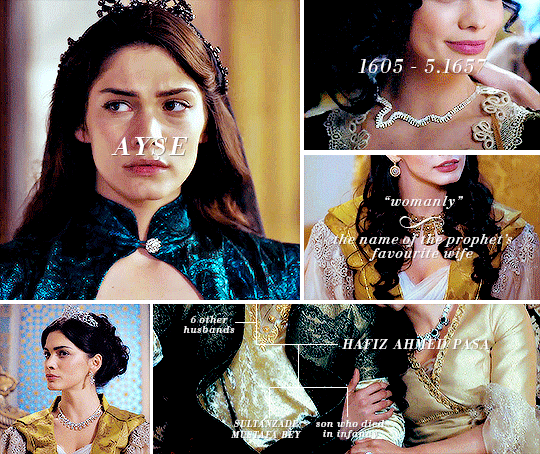

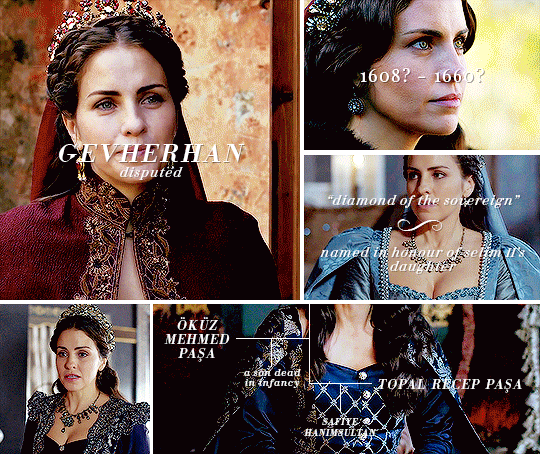
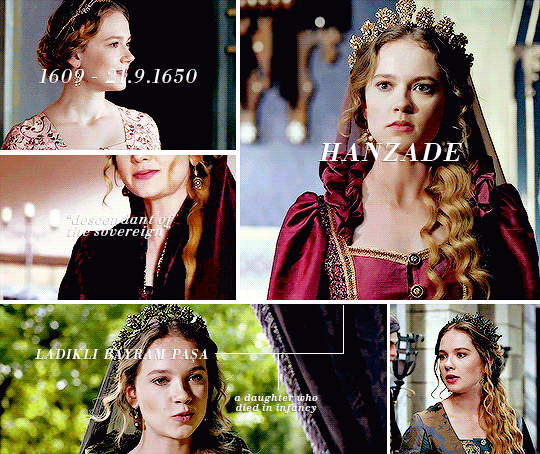
the daughters of Kösem Sultan
#history#historyedit#ottoman history#kosem sultan#ayse sultan daughter of ahmed i#fatma sultan daughter of ahmed i#gevherhan sultan daughter of ahmed i#hanzade sultan daughter of ahmed i#ottomanladiesedit
370 notes
·
View notes
Photo








the known grandchildren of Handan Valide Sultan -- requested by anon
#history#historyedit#ottoman history#osman ii#sehzade mehmed son of ahmed i#ayse sultan daughter of ahmed i#fatma sultan daughter of ahmed i#gevherhan sultan daughter of ahmed i#hanzade sultan daughter of ahmed i#murad iv#sehzade bayezid son of ahmed i#sehzade huseyin son of ahmed i#sehzade kasim son of ahmed i#atike sultan daughter of ahmed i#sehzade suleyman son of ahmed i#ibrahim i#abide sultan daughter of ahmed i#ottomanladiesedit
262 notes
·
View notes
Photo




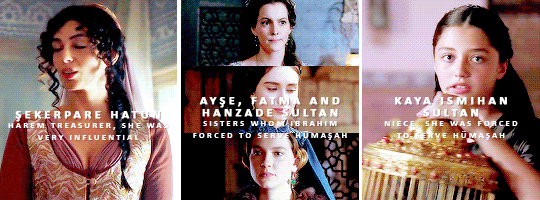
Ibrahim Han of the Ottoman Empire + the women in his life
#history#historyedit#ottoman history#kosem sultan#turhan hatice sultan#haseki hatice muazzez sultan#saliha dilasub sultan#haseki ayse sultan iii#haseki mahienver sultan#haseki sacbagli sultan#haseki sivekar sultan#haseki humasah sultan#sekerpare hatun#ayse sultan daughter of ahmed i#fatma sultan daughter of ahmed i#hanzade sultan daughter of ahmed i#kaya ismihan sultan daughter of murad iv#ottomanladiesedit#*womeninlife
395 notes
·
View notes